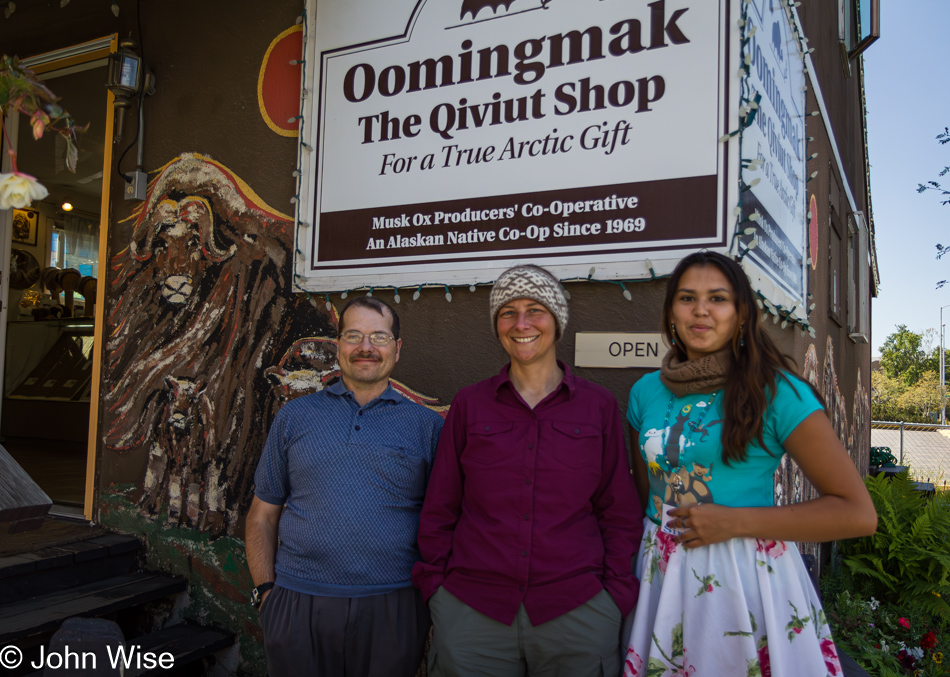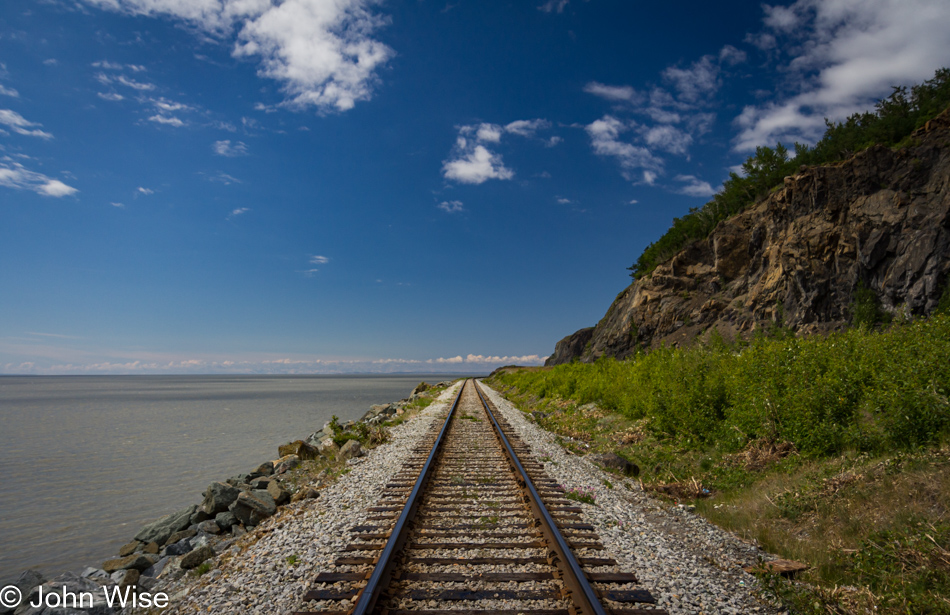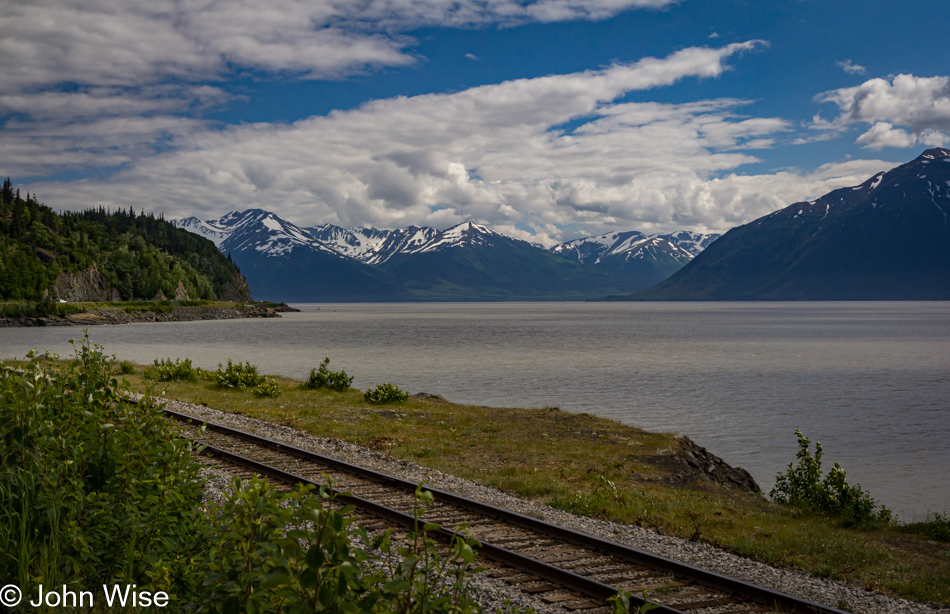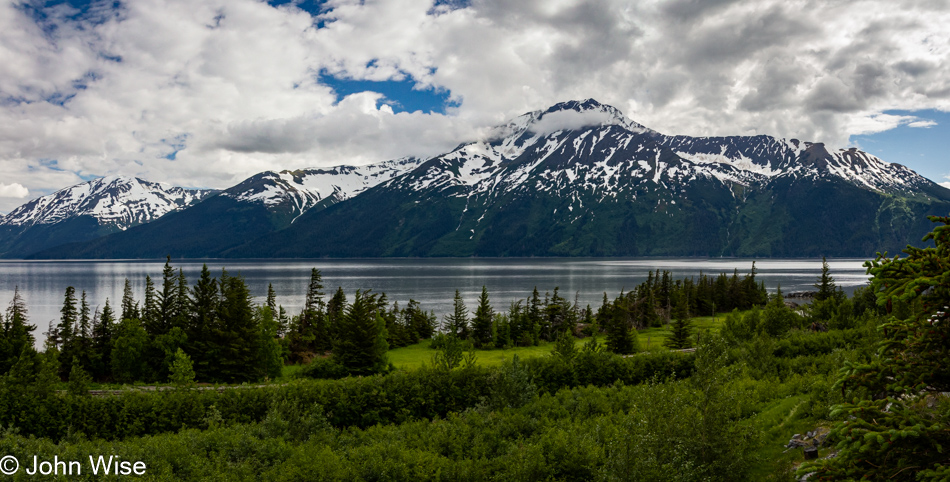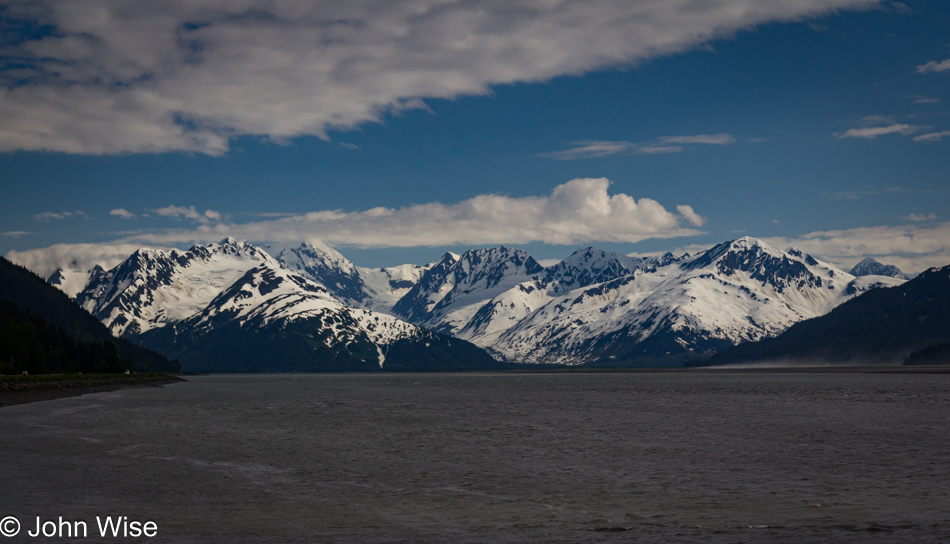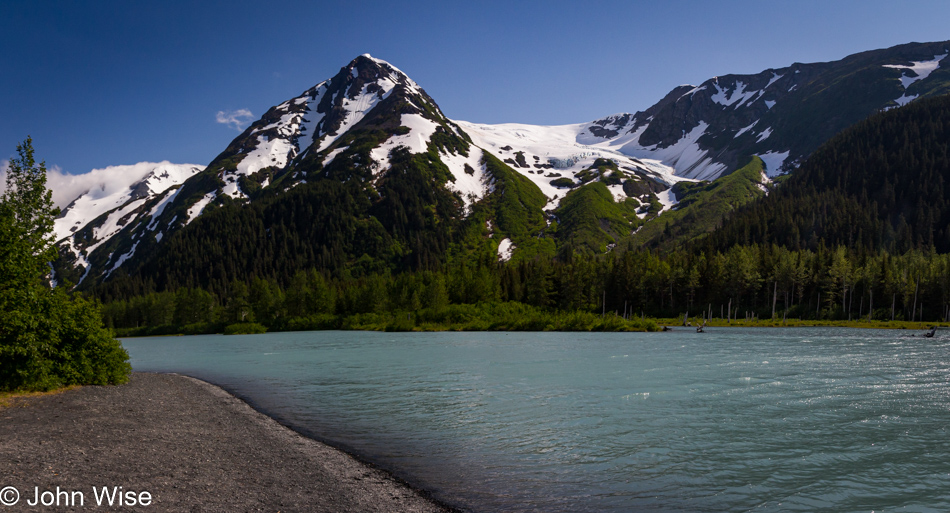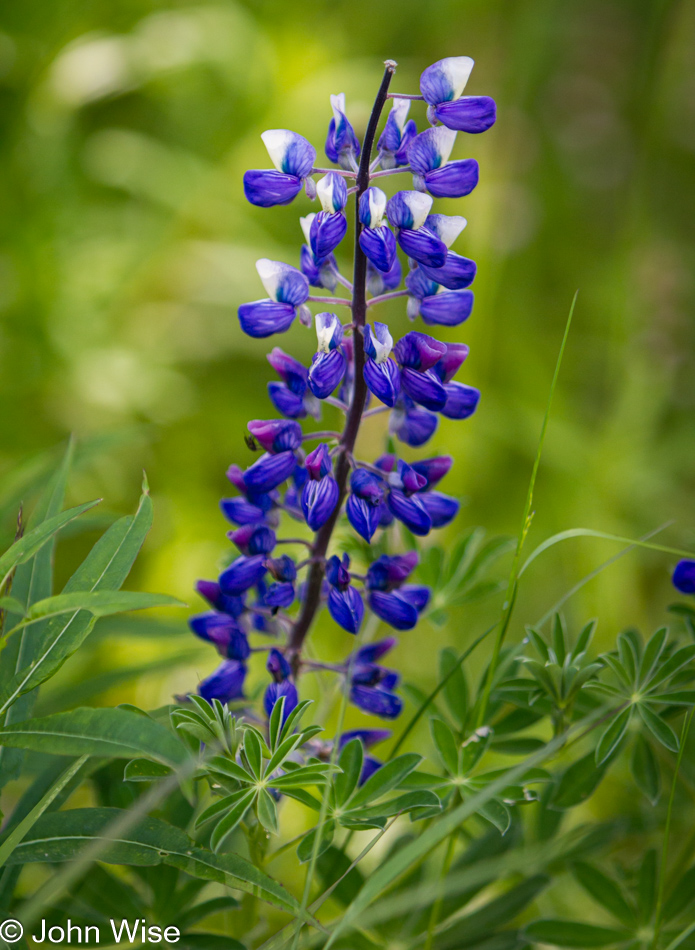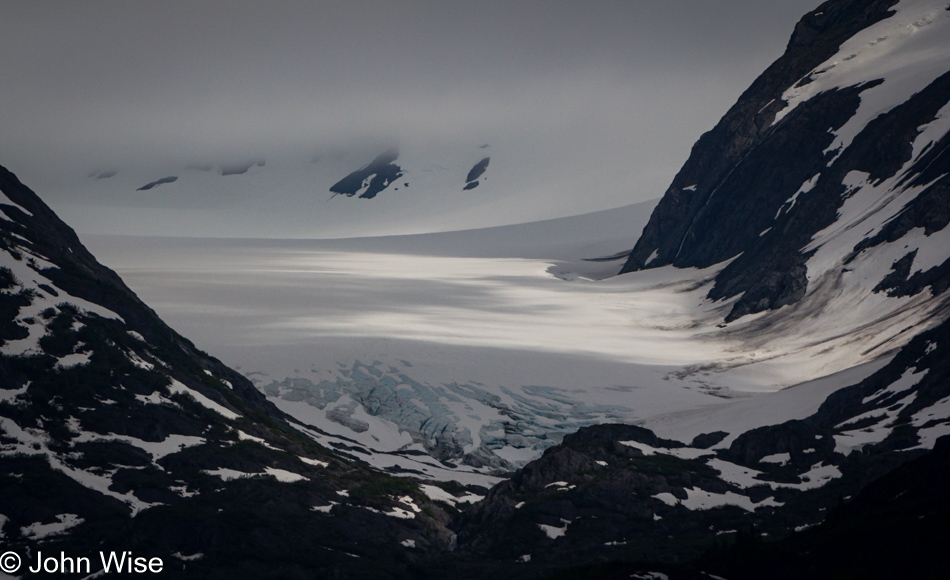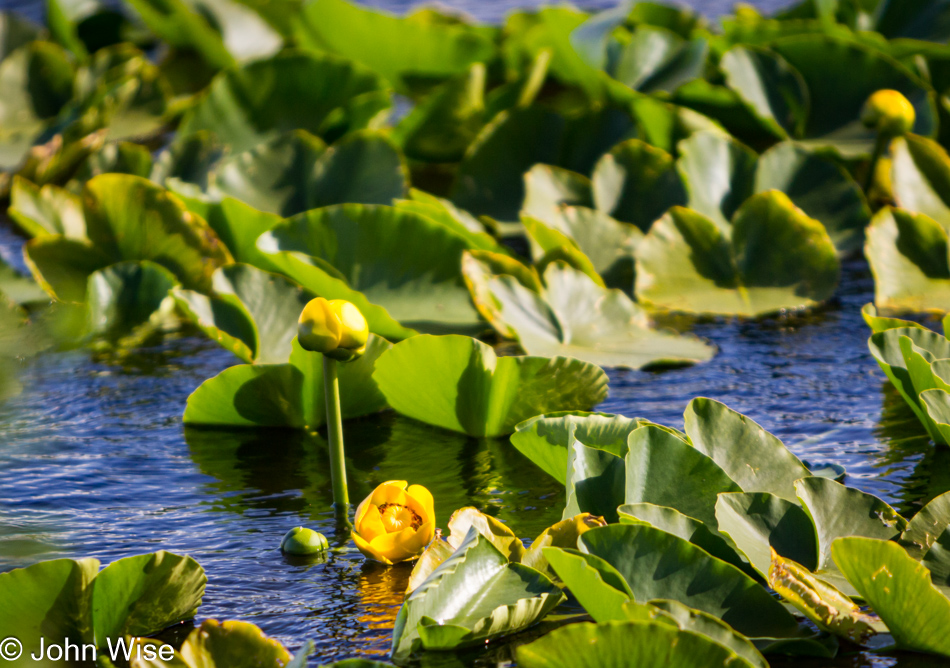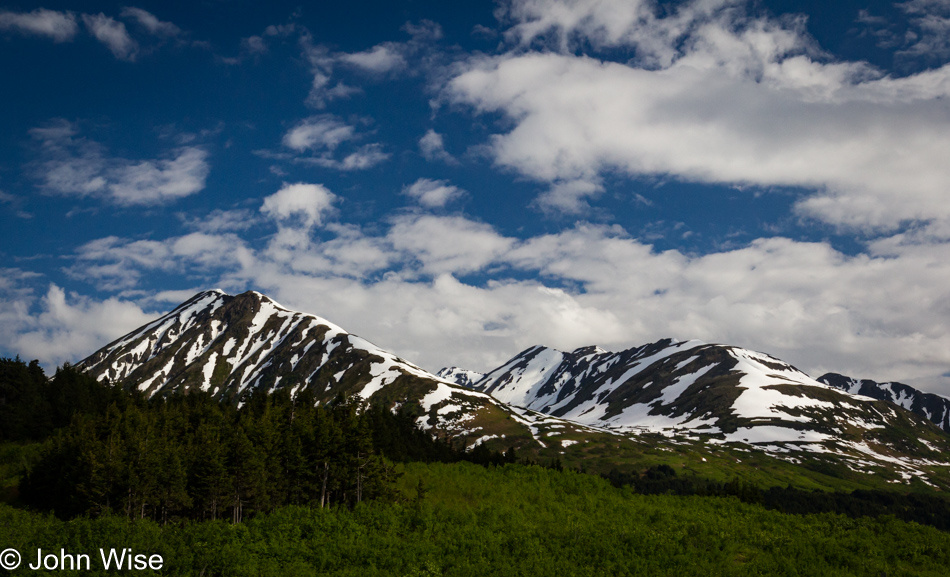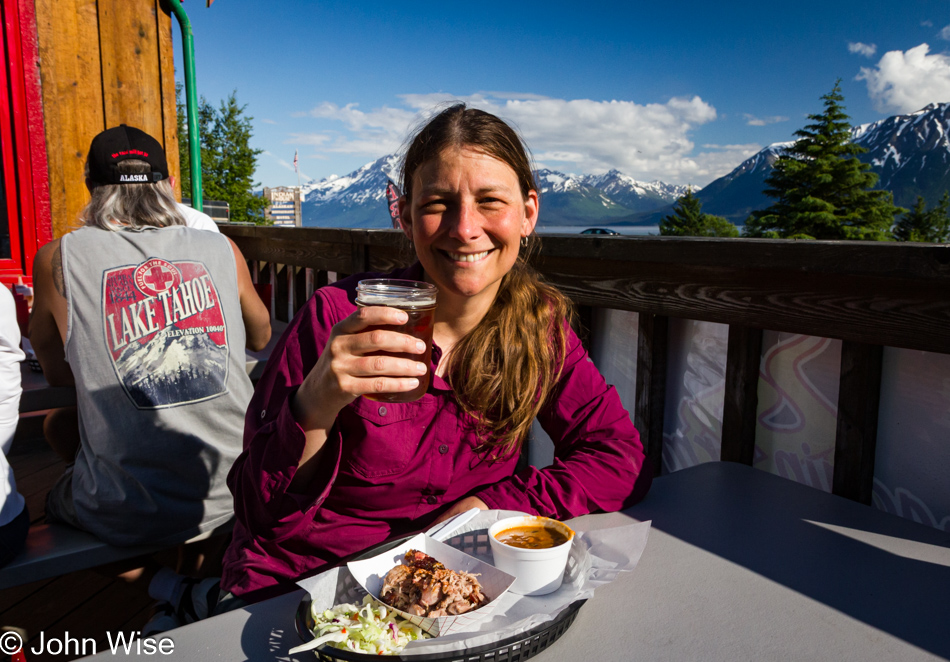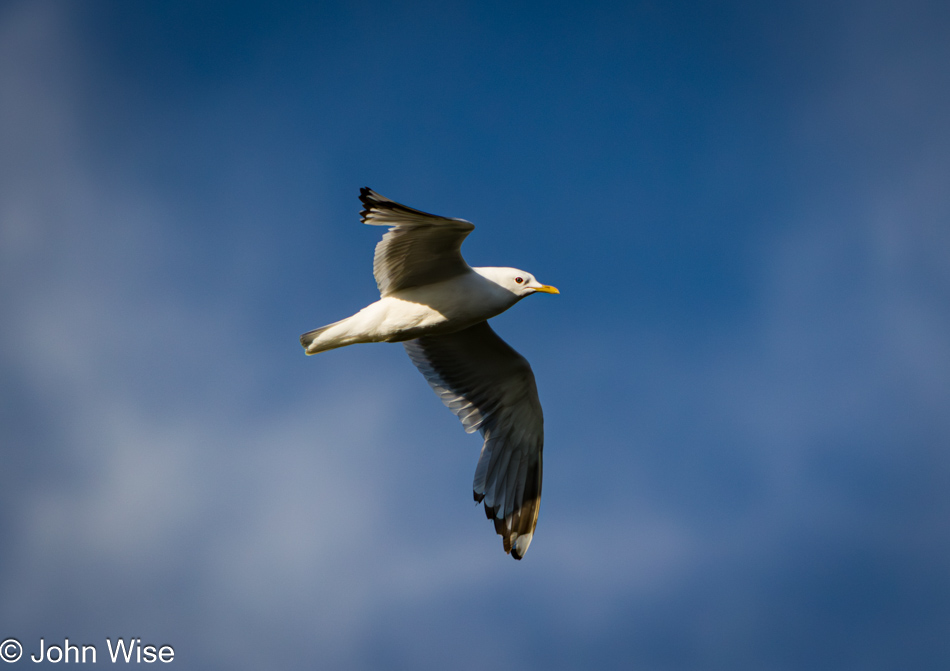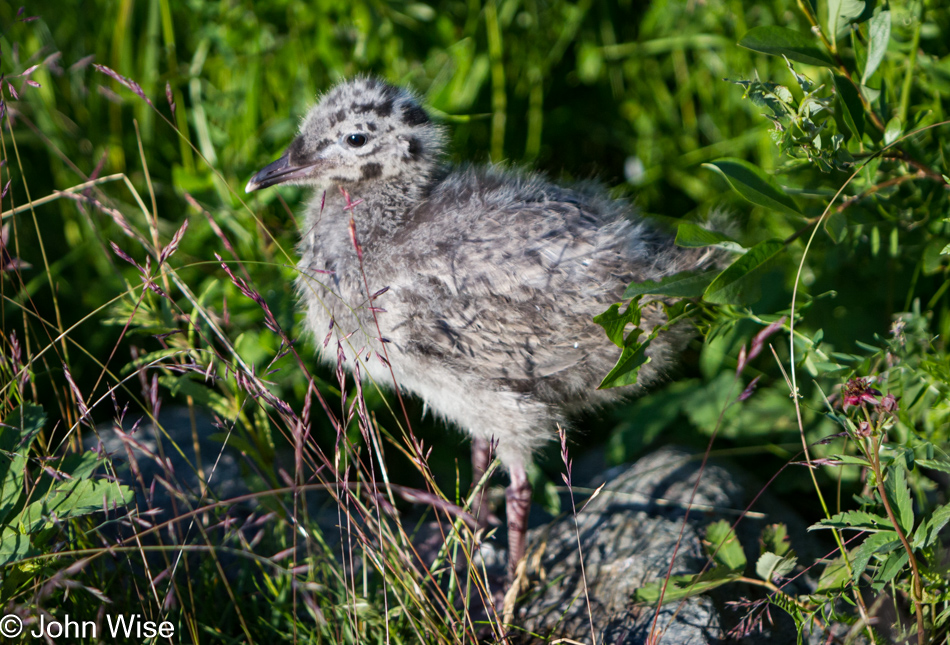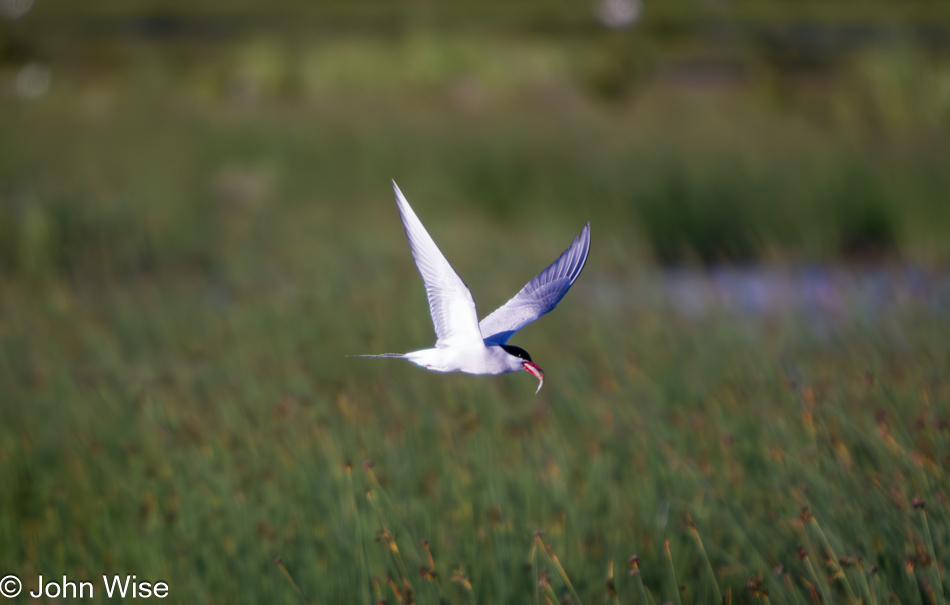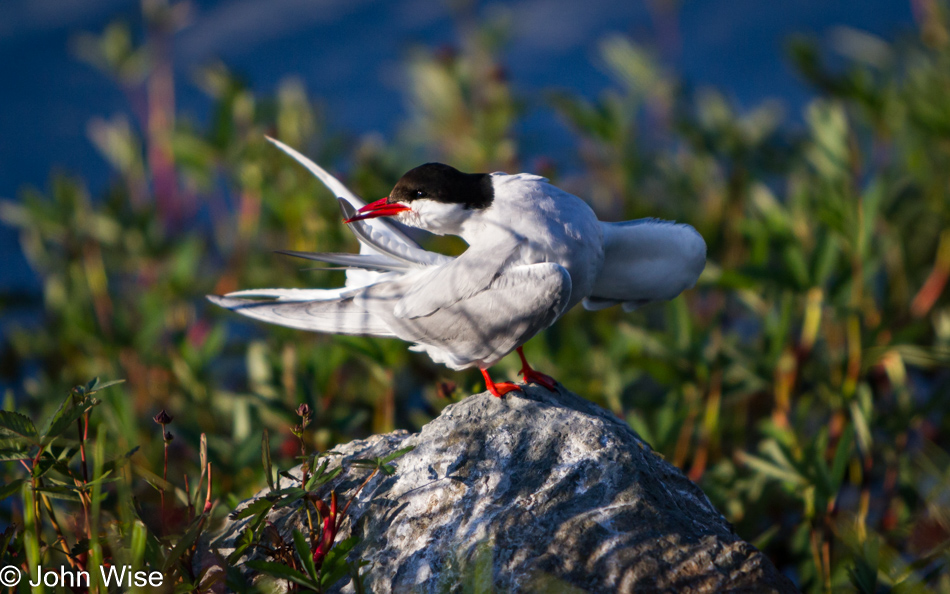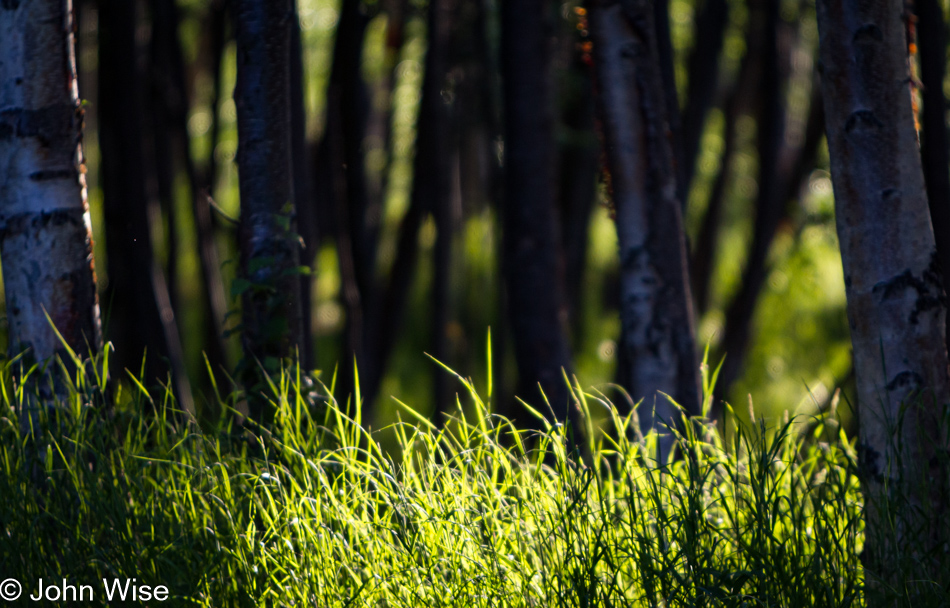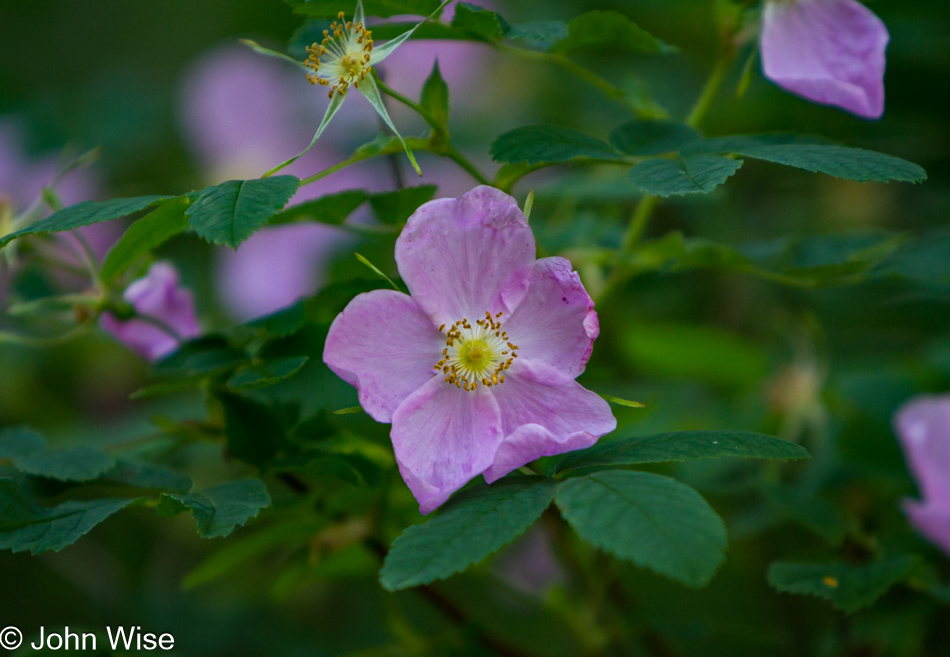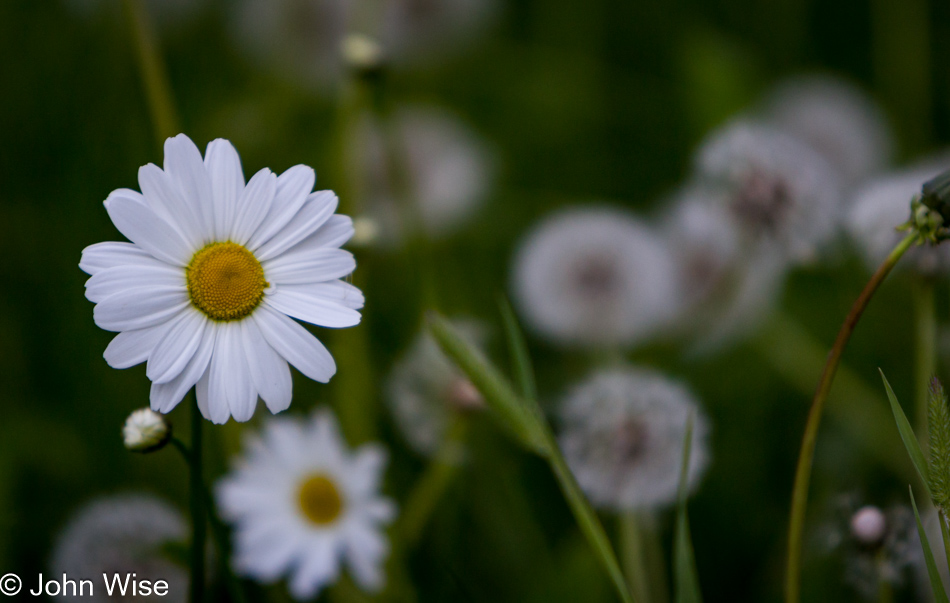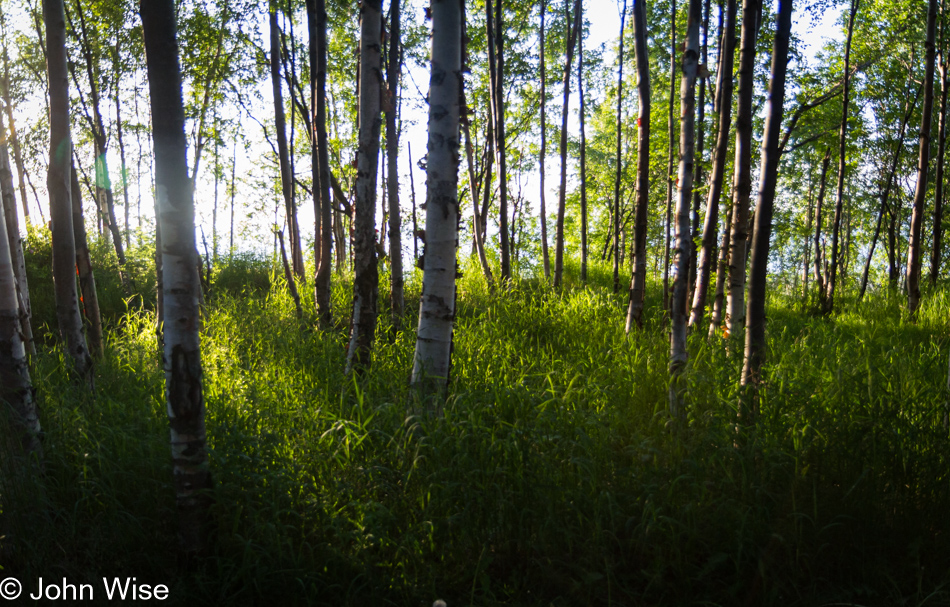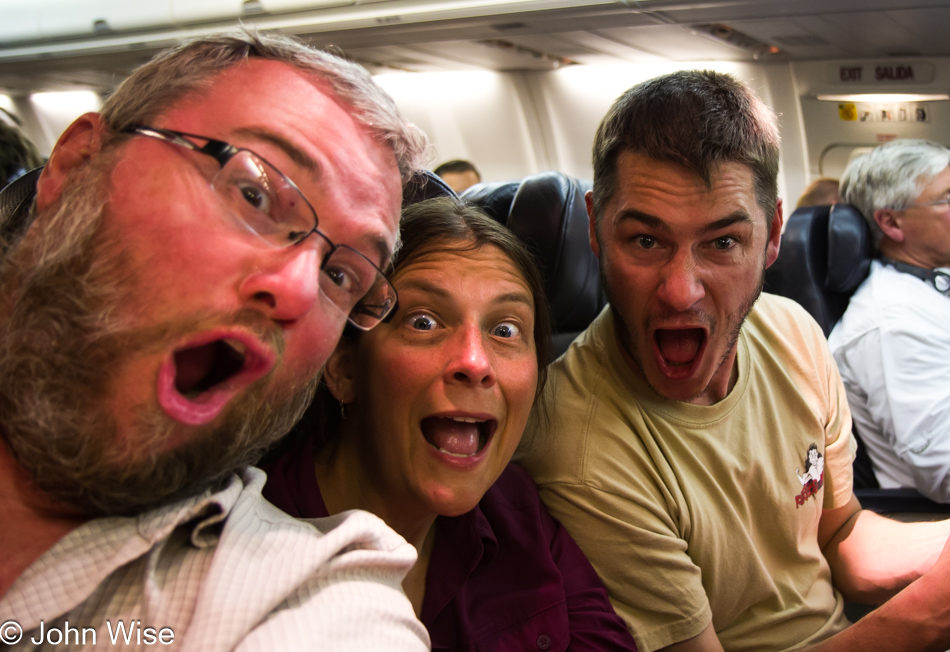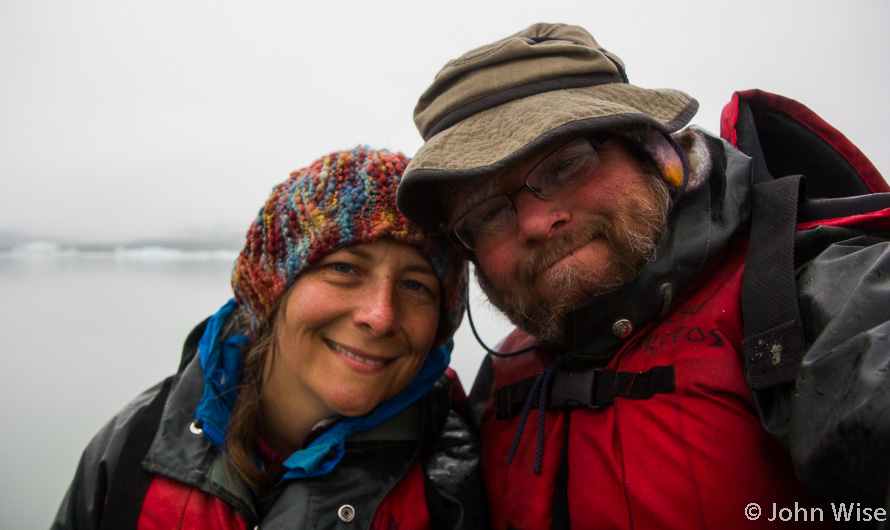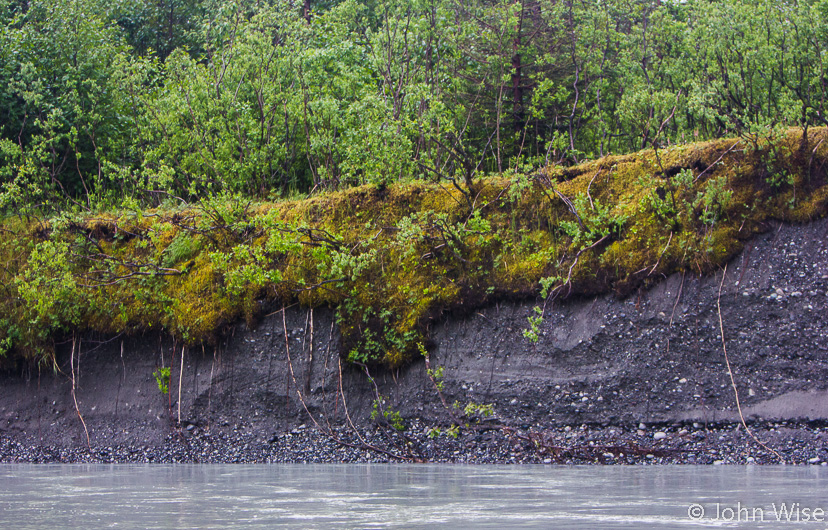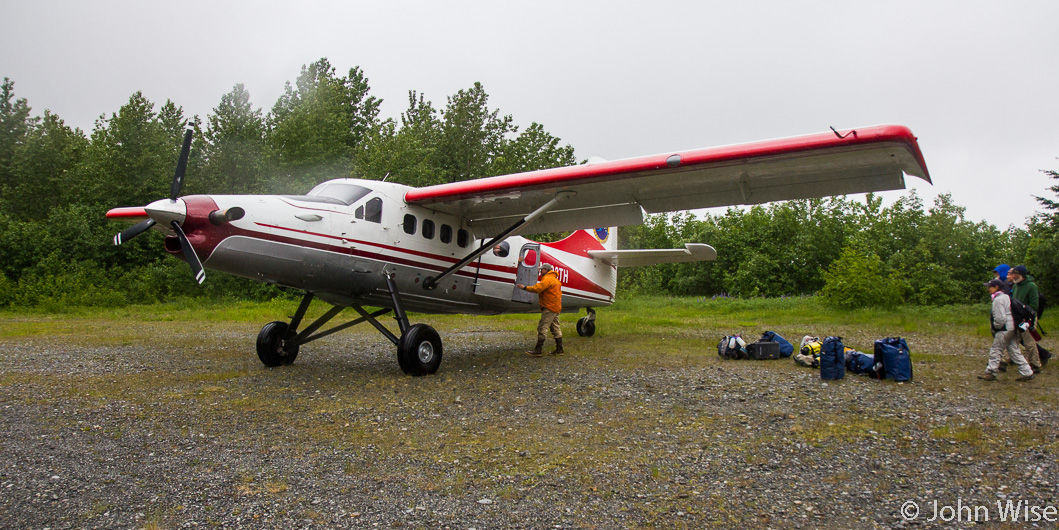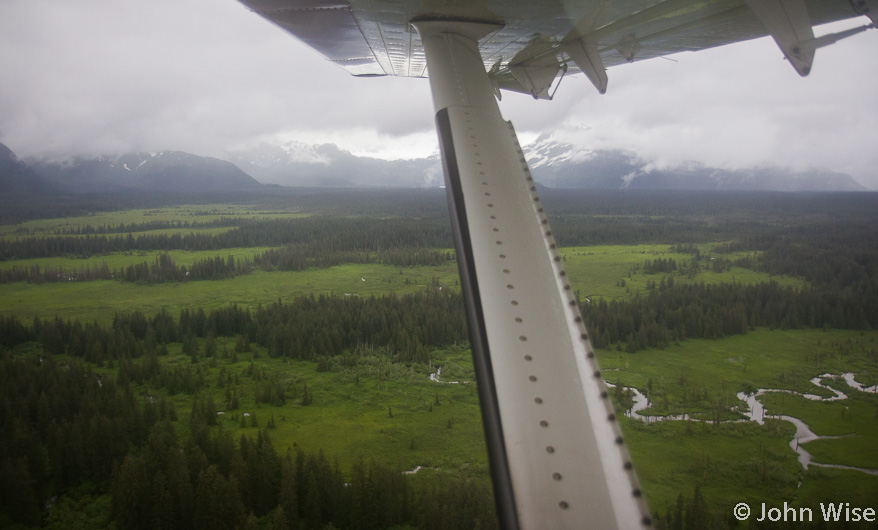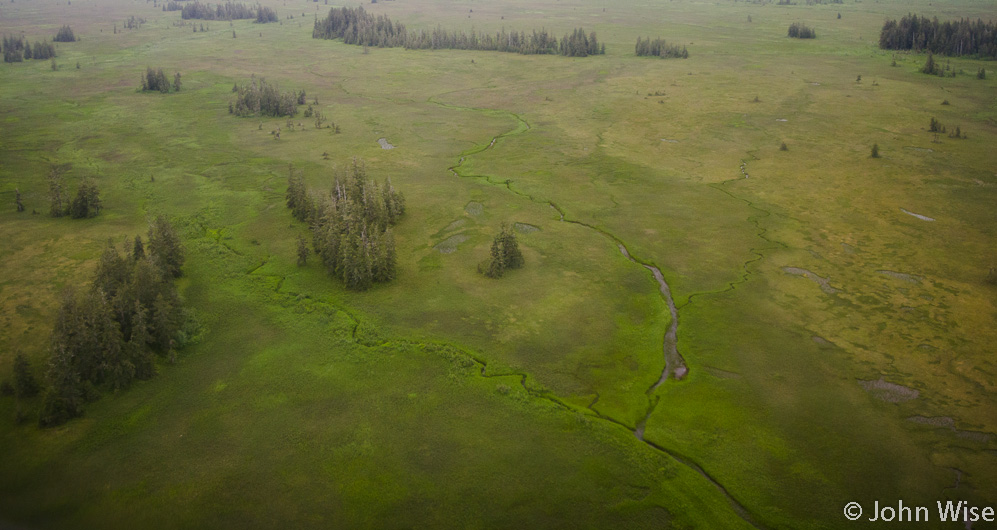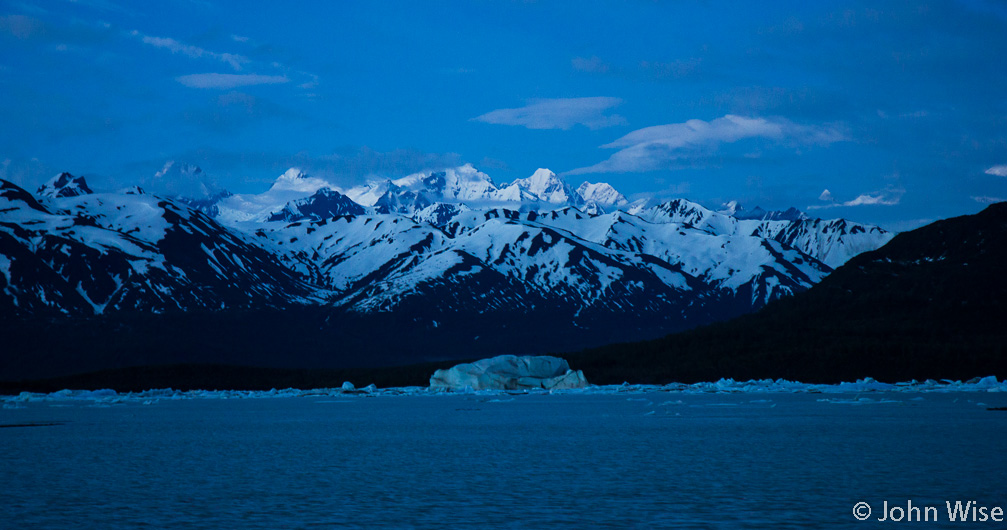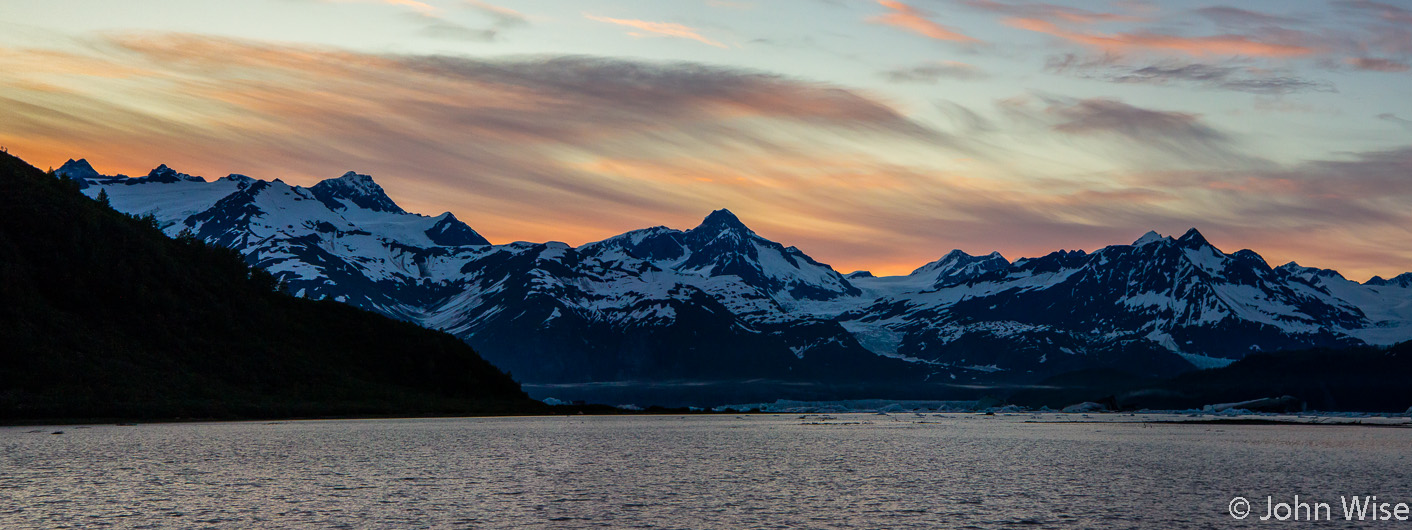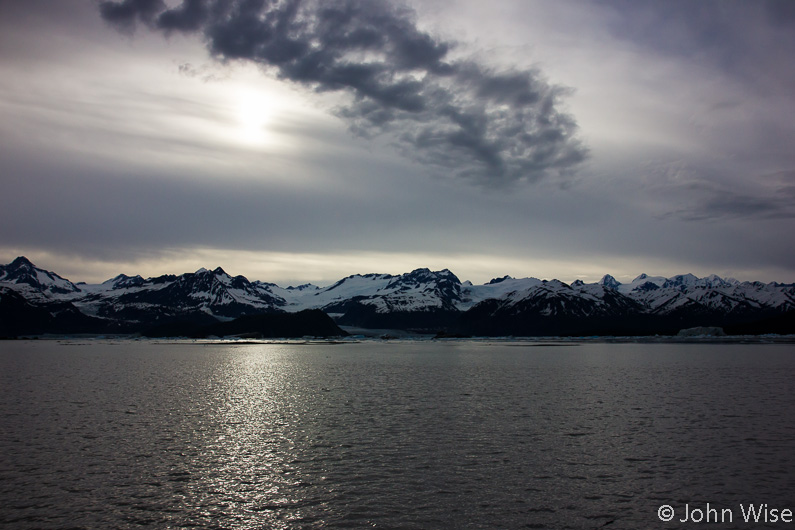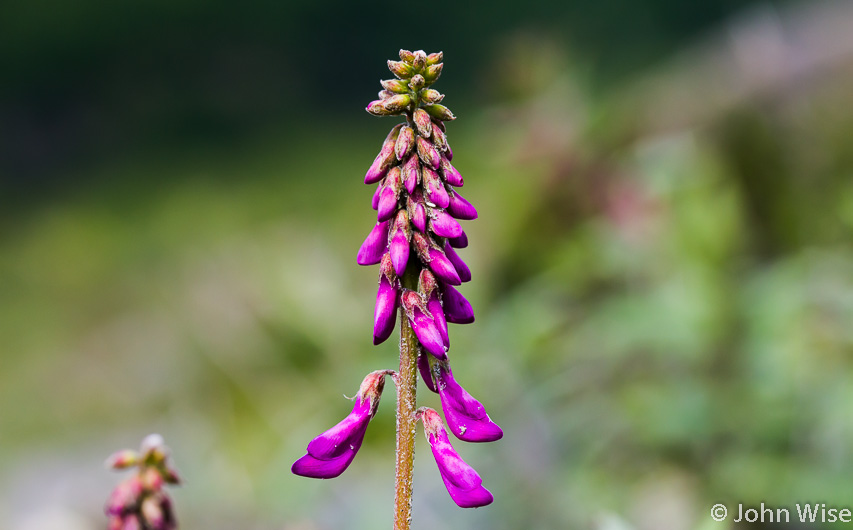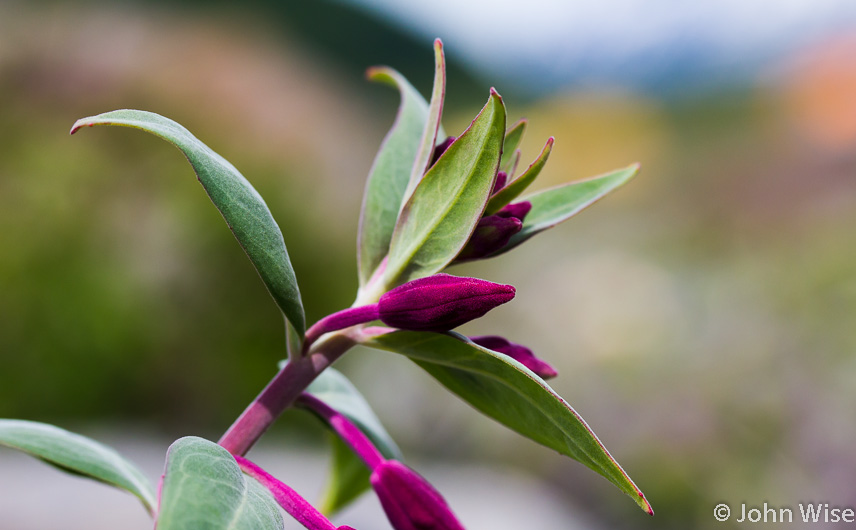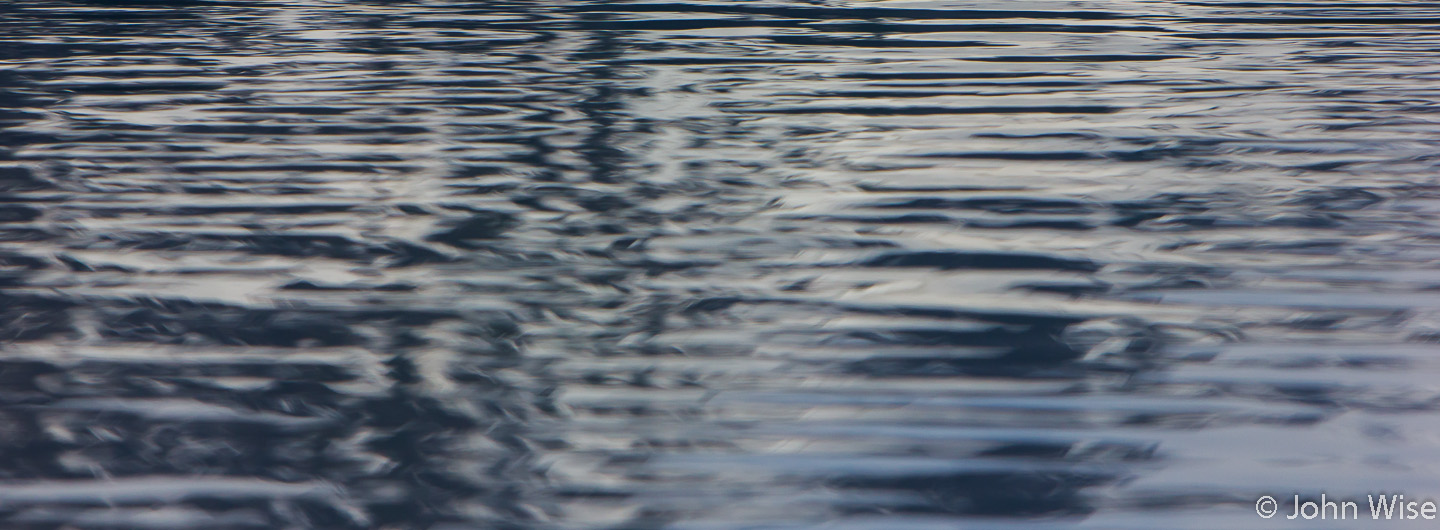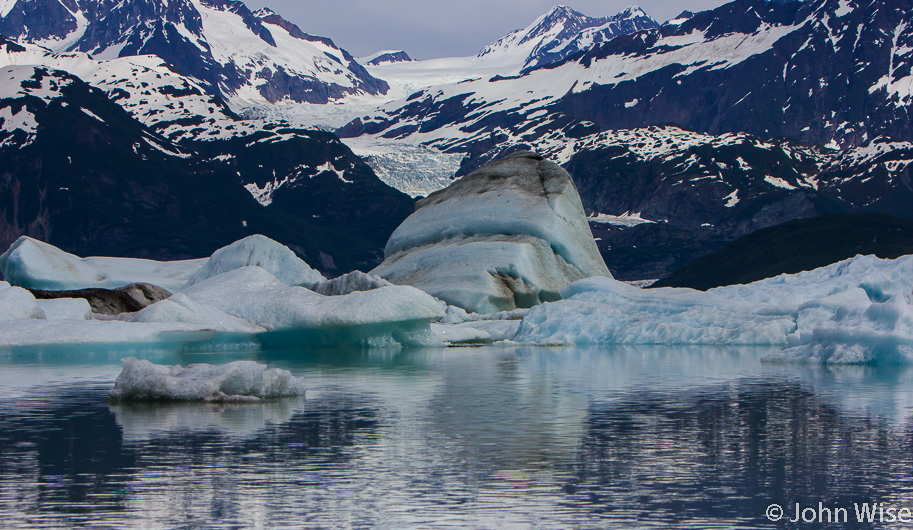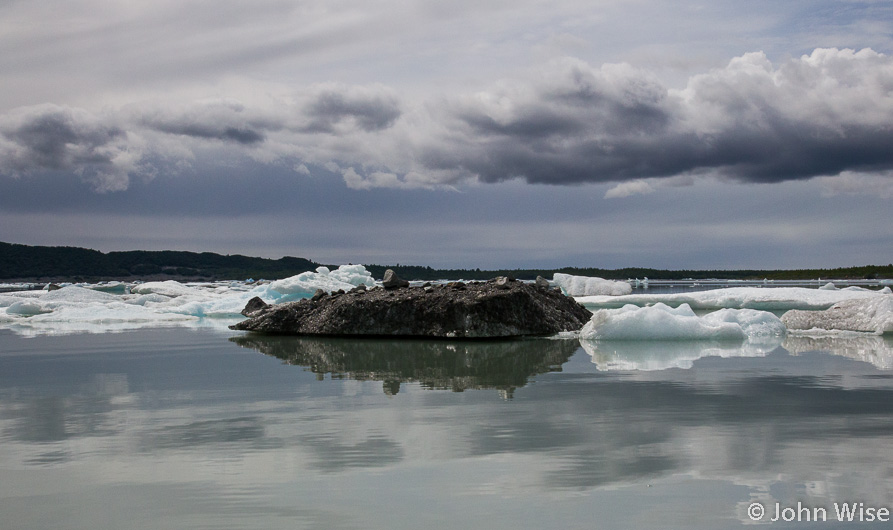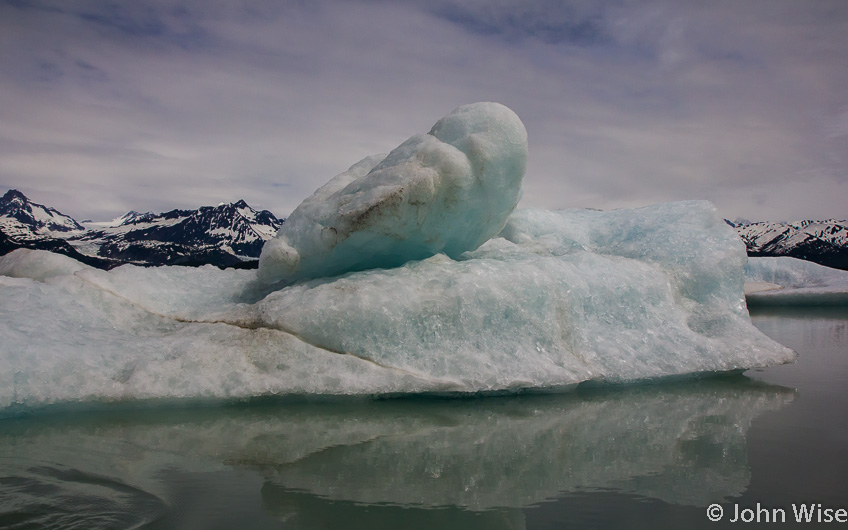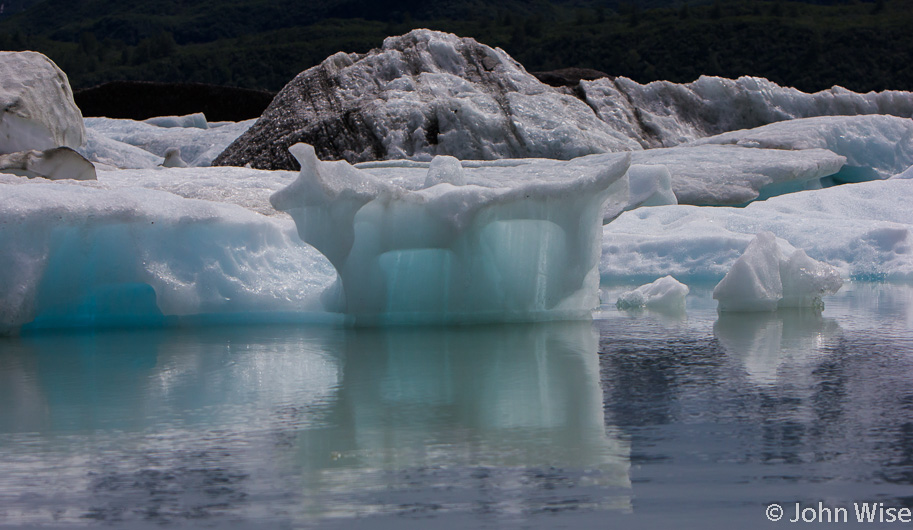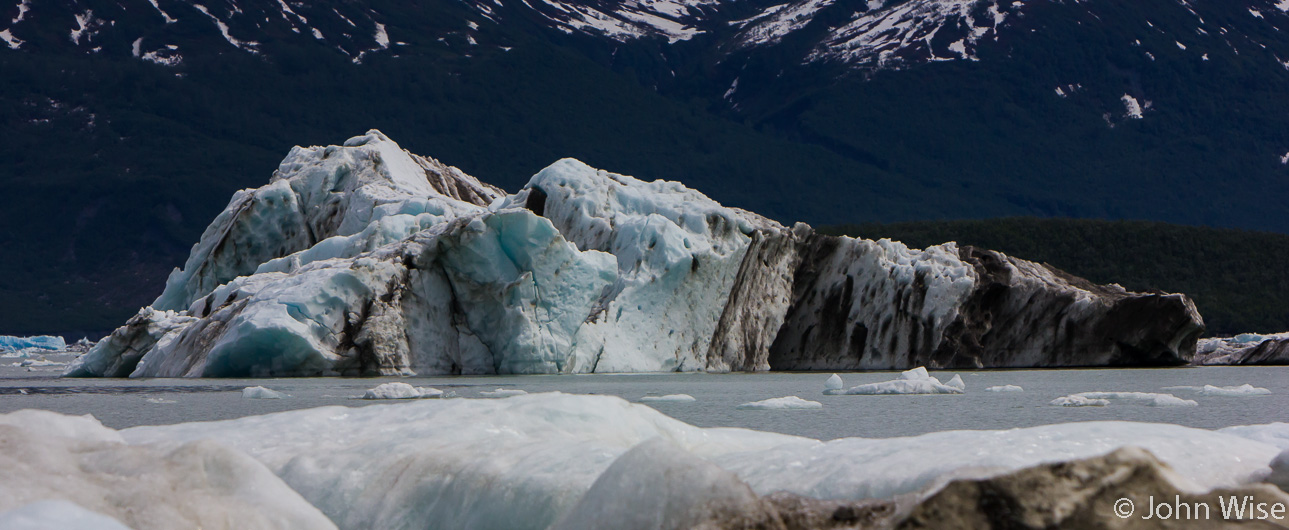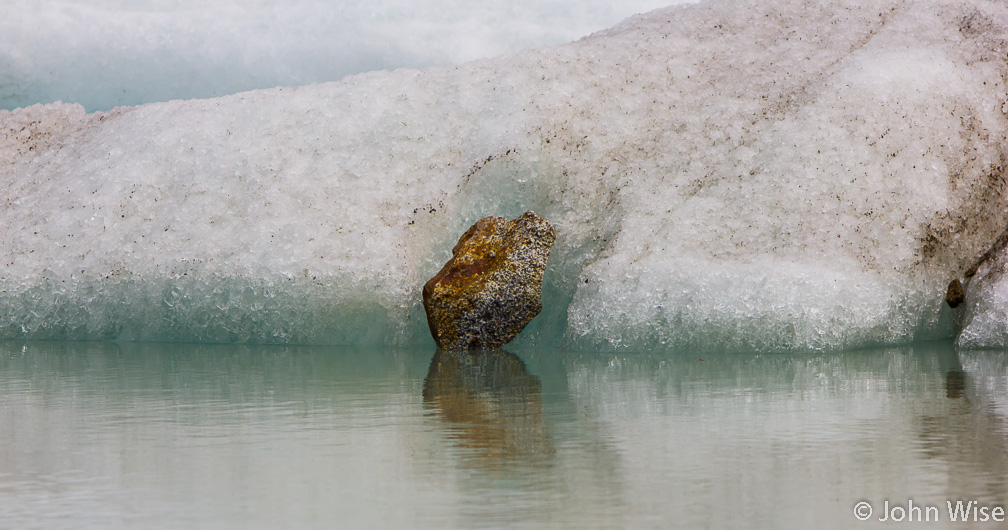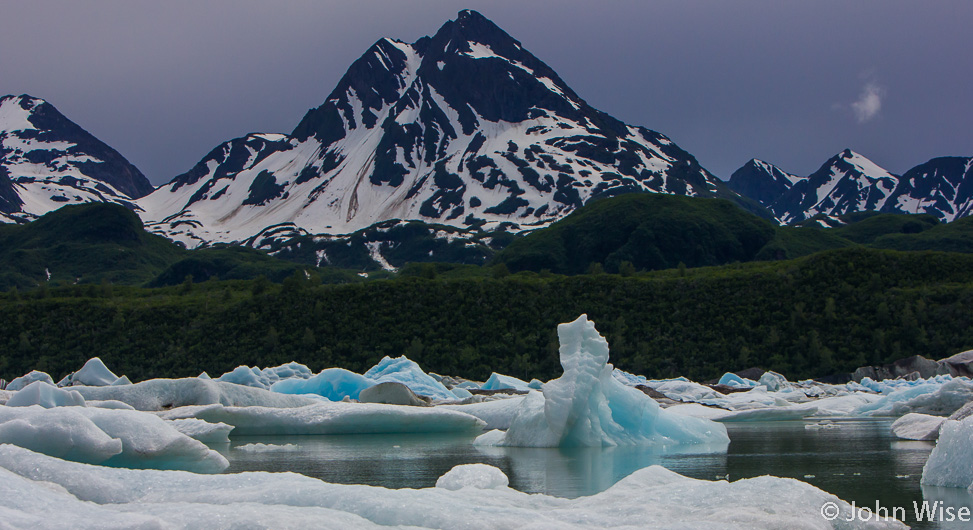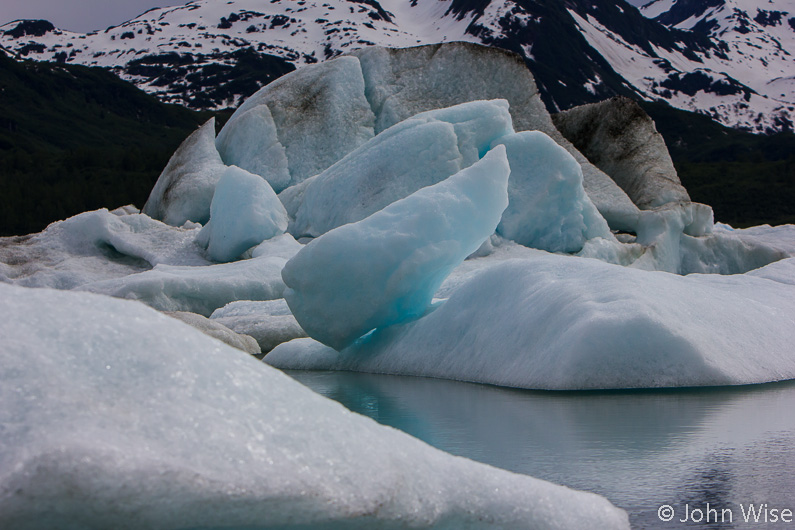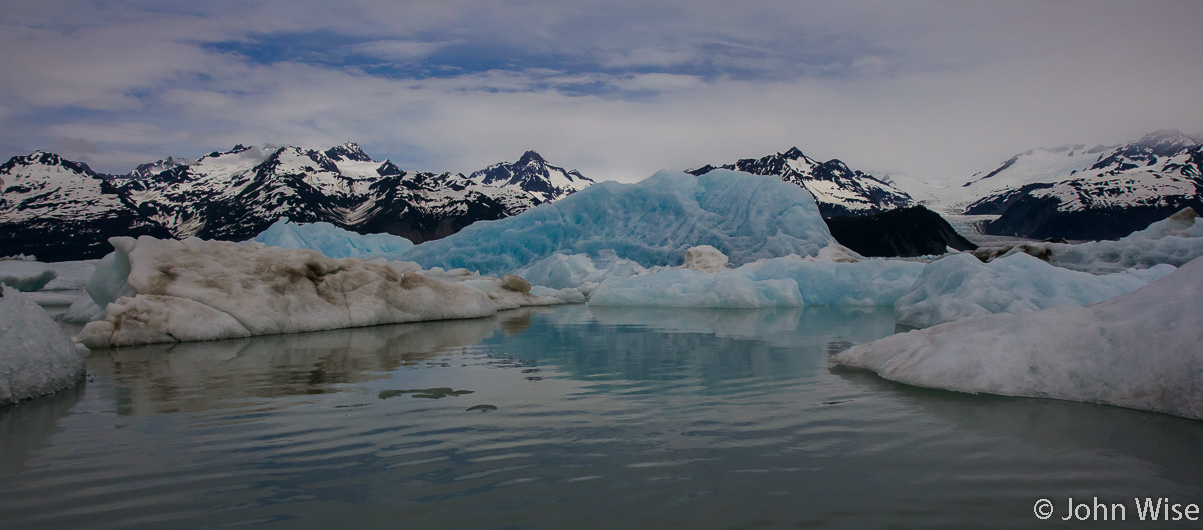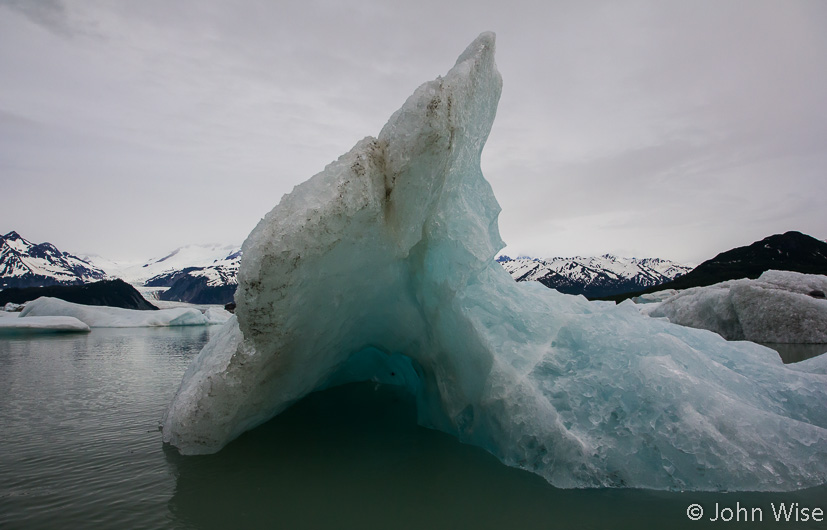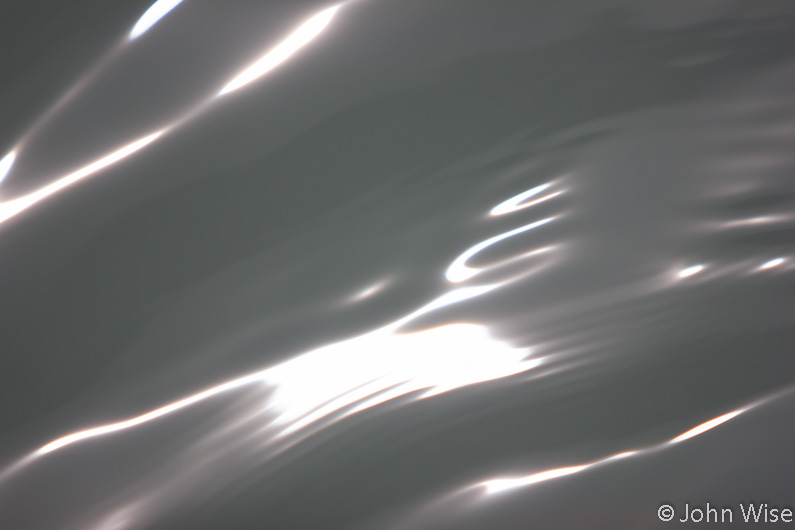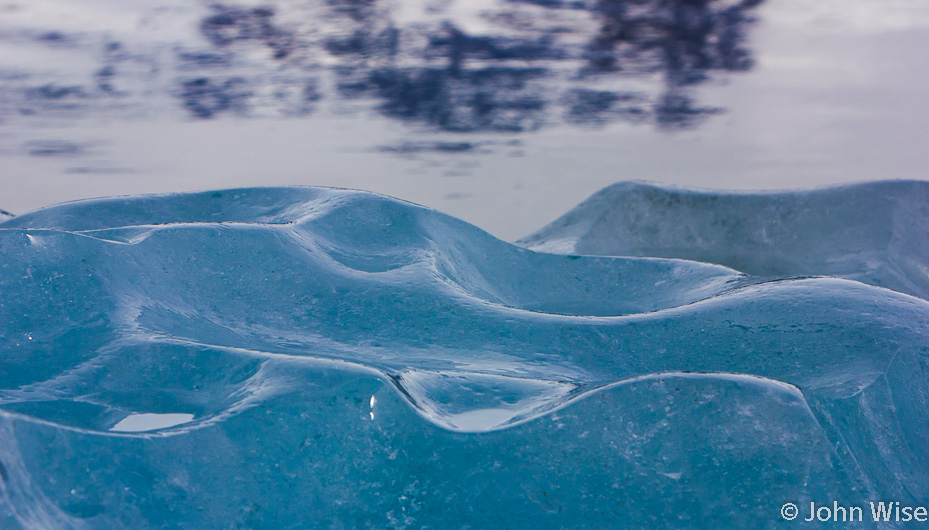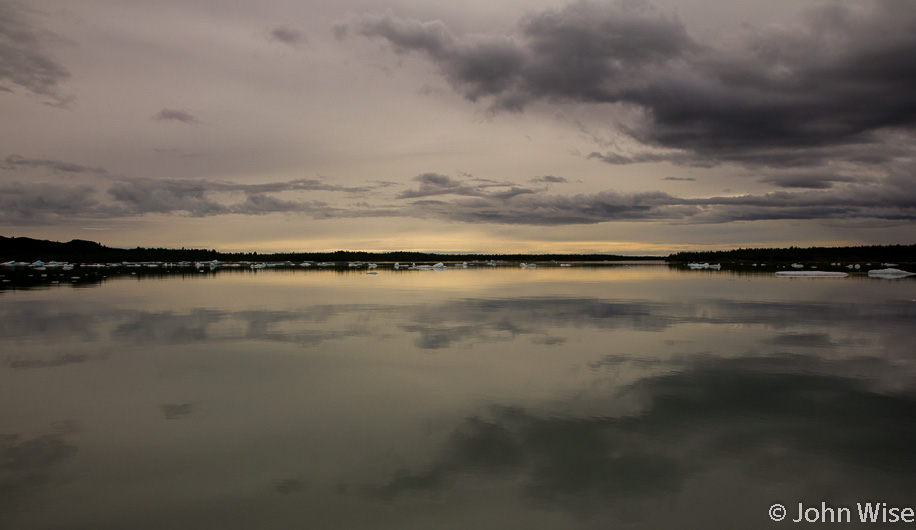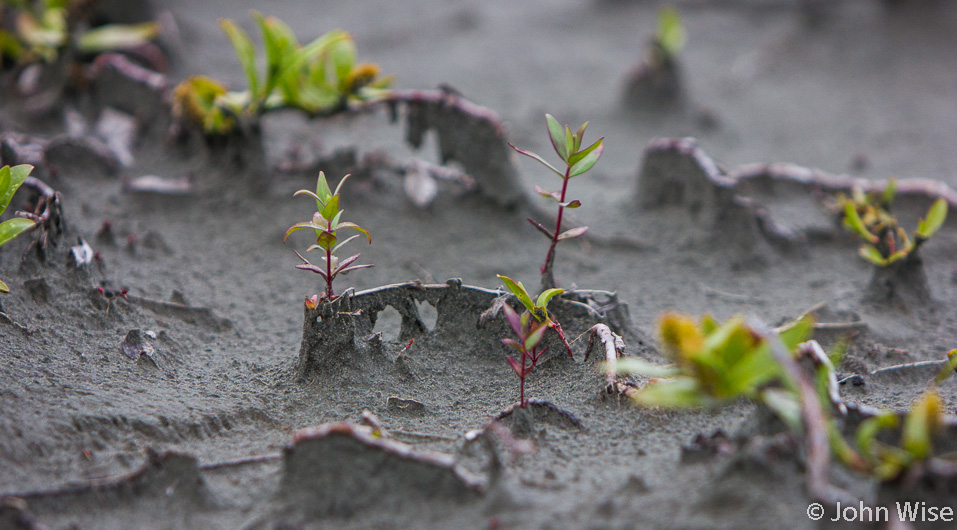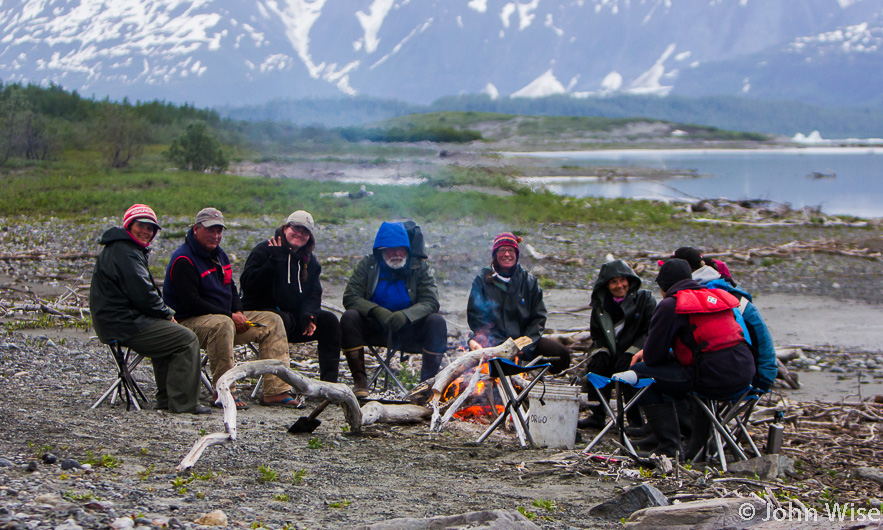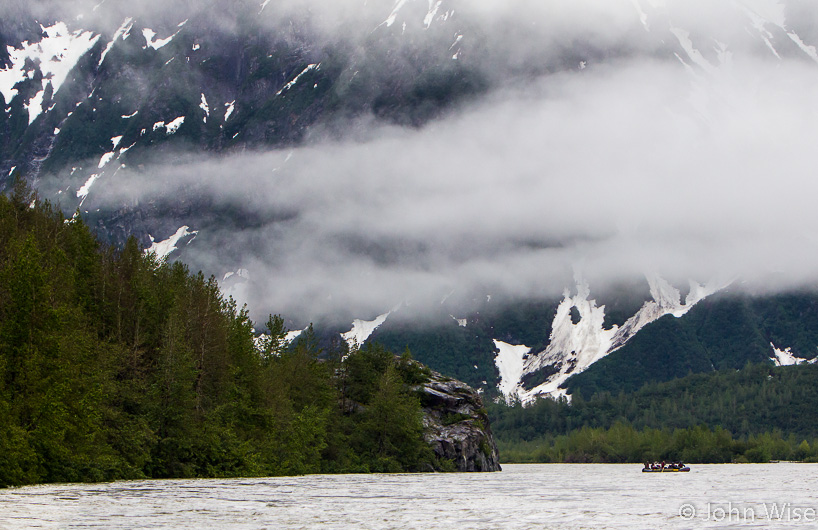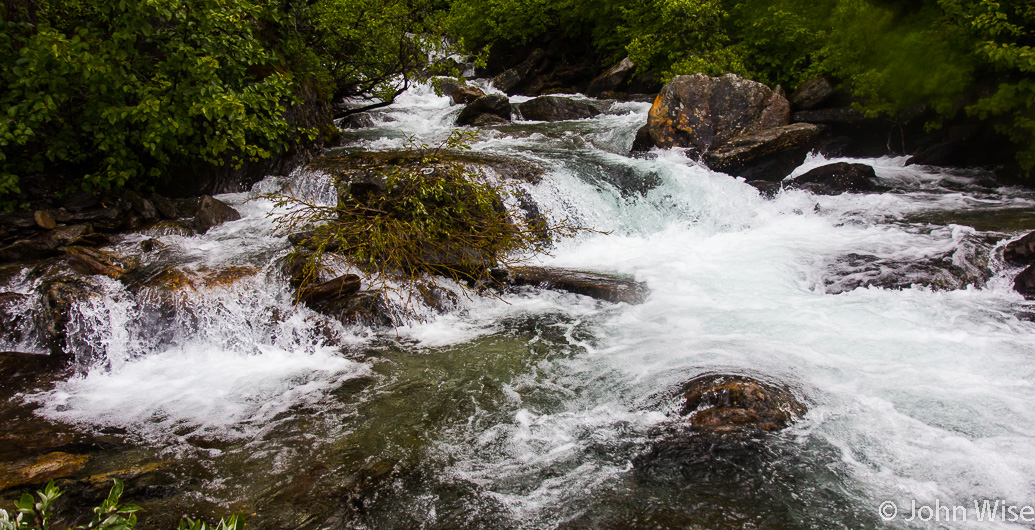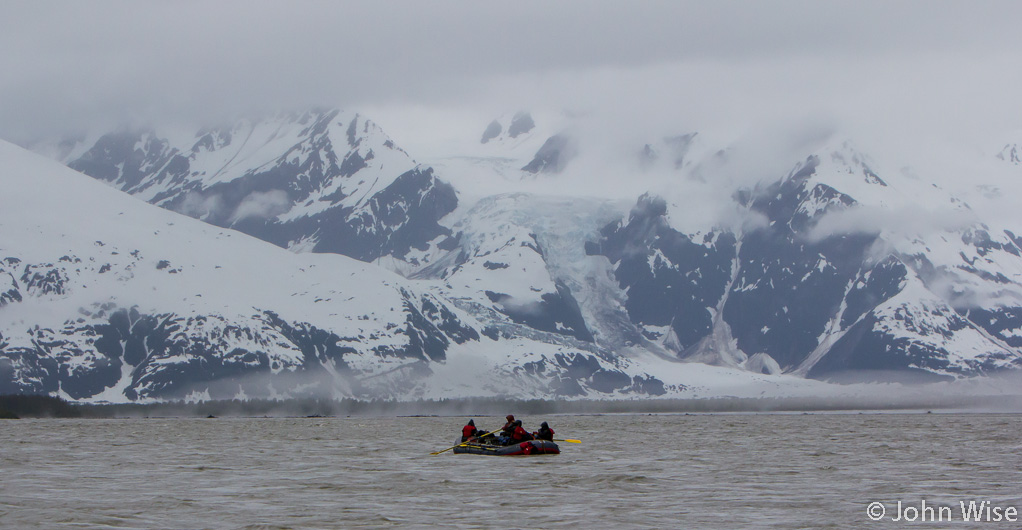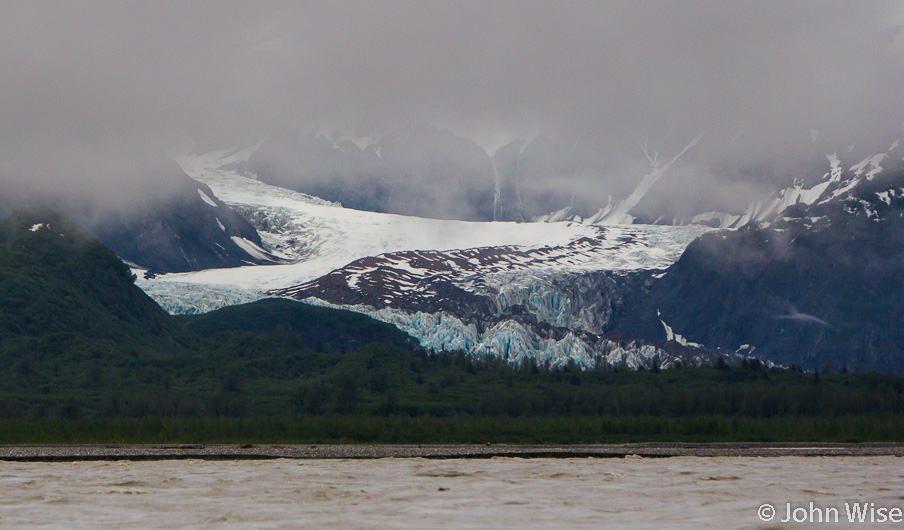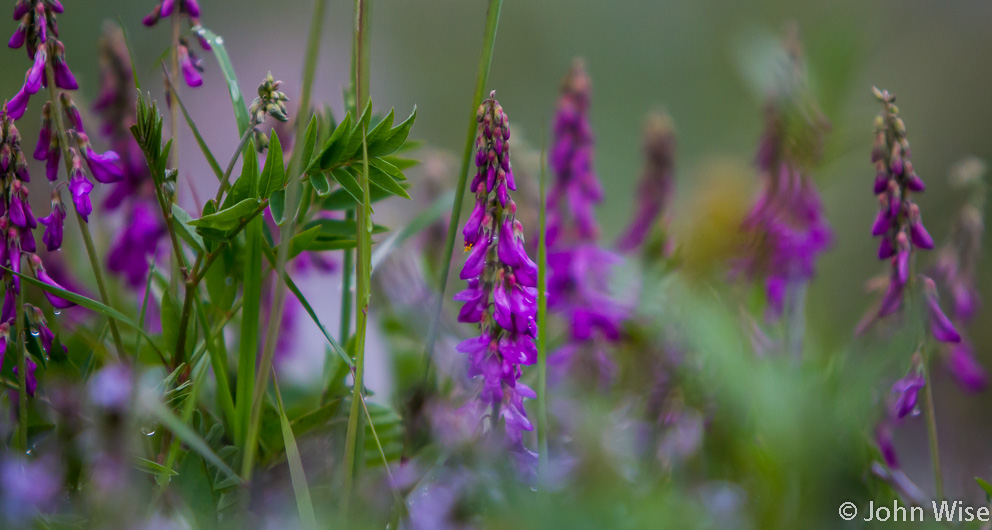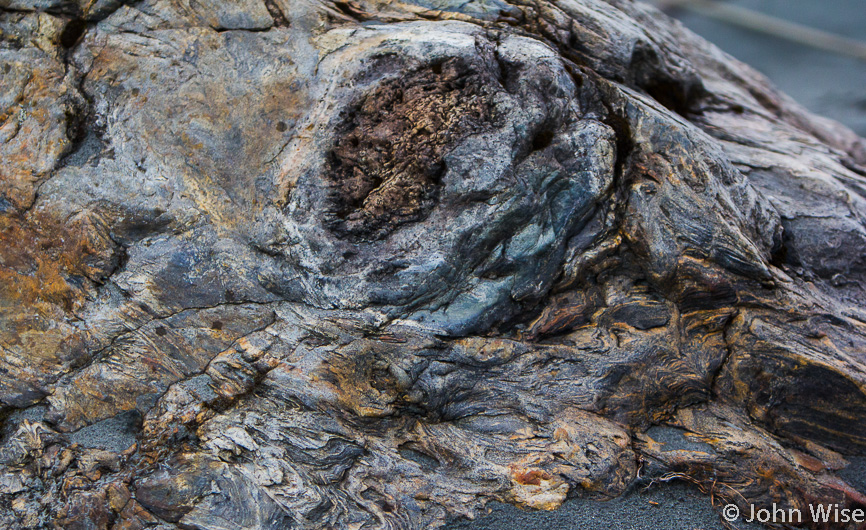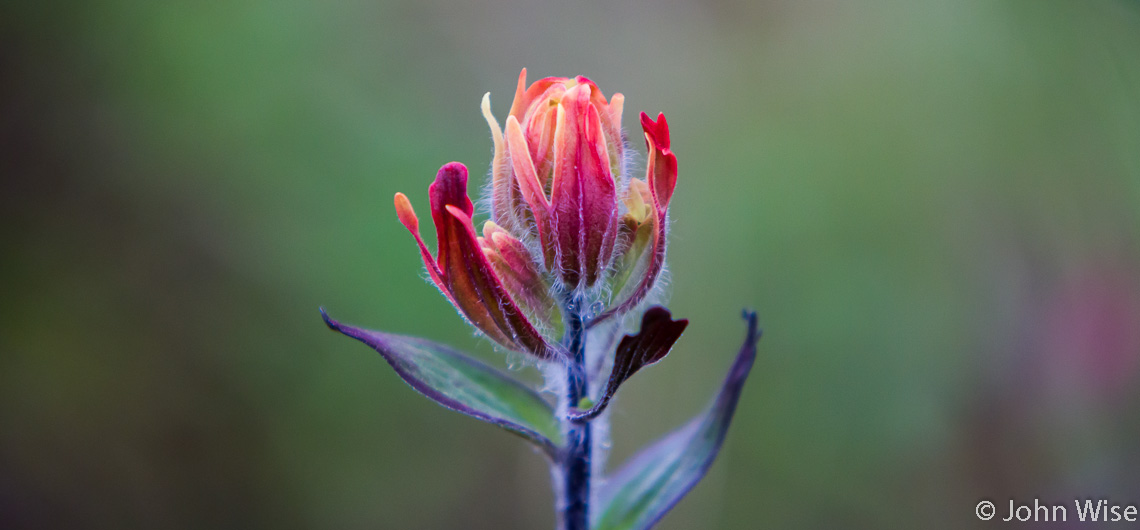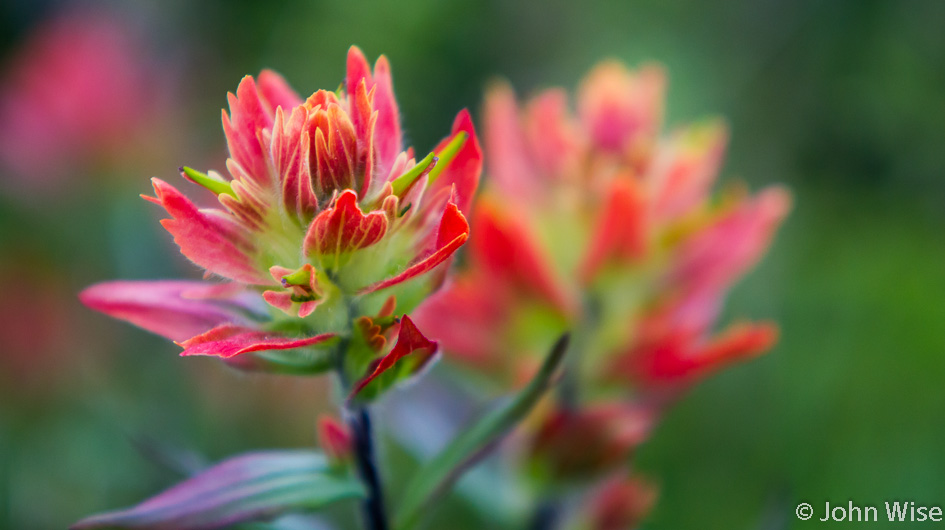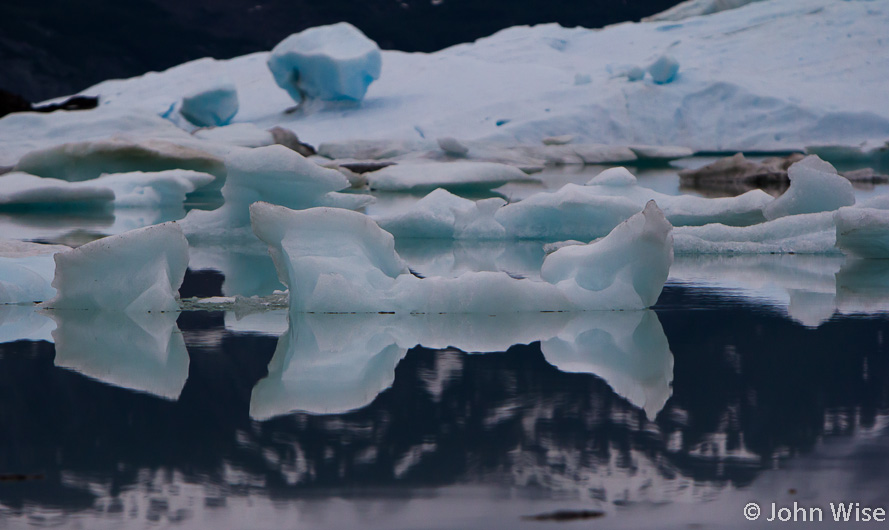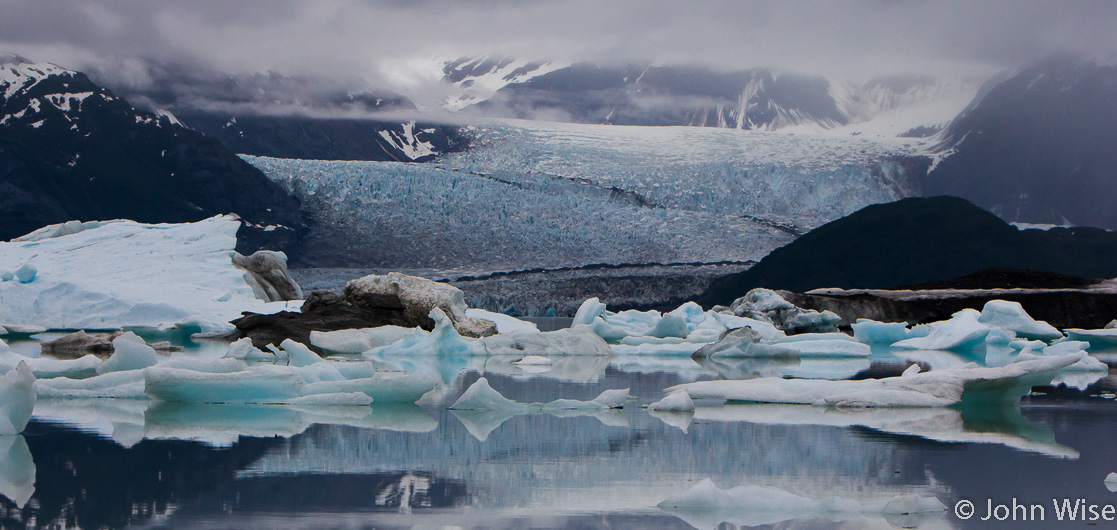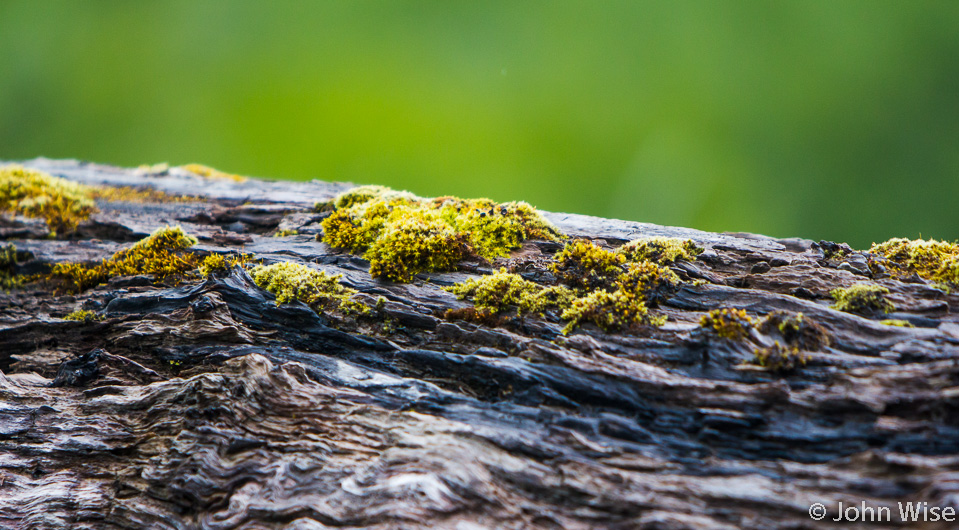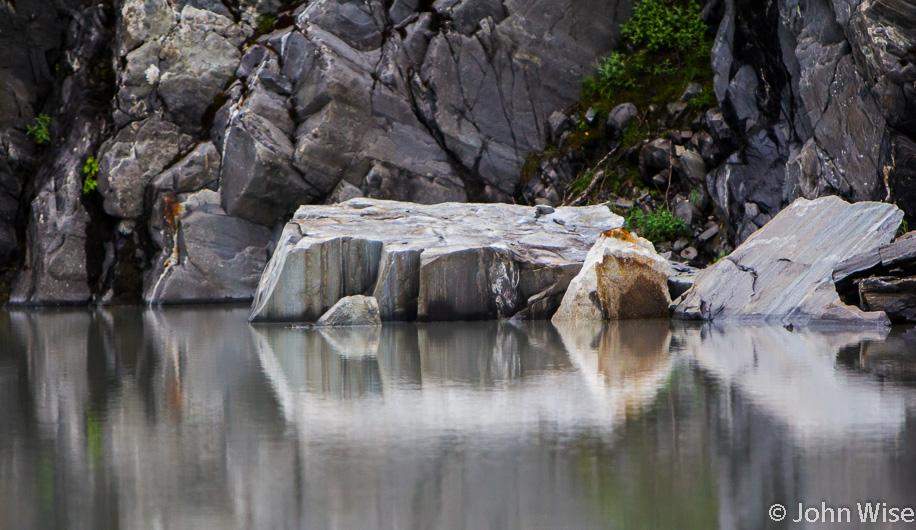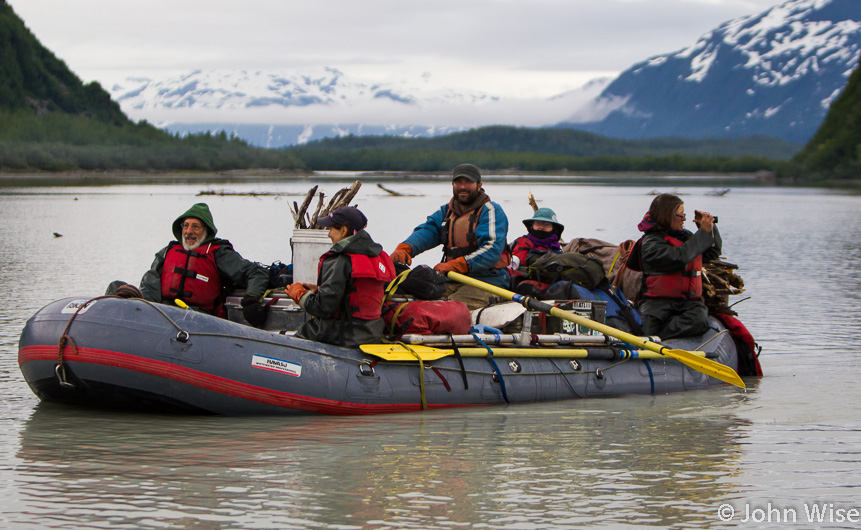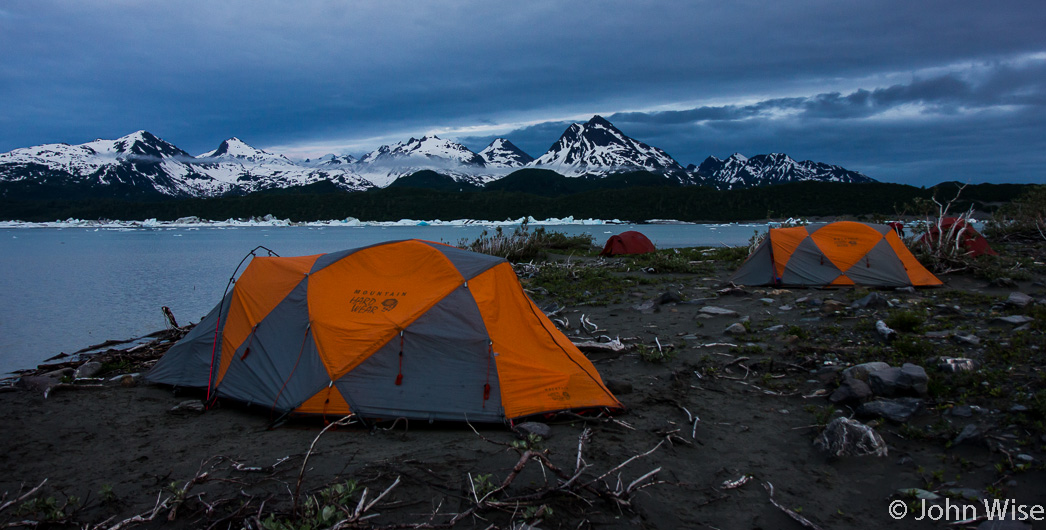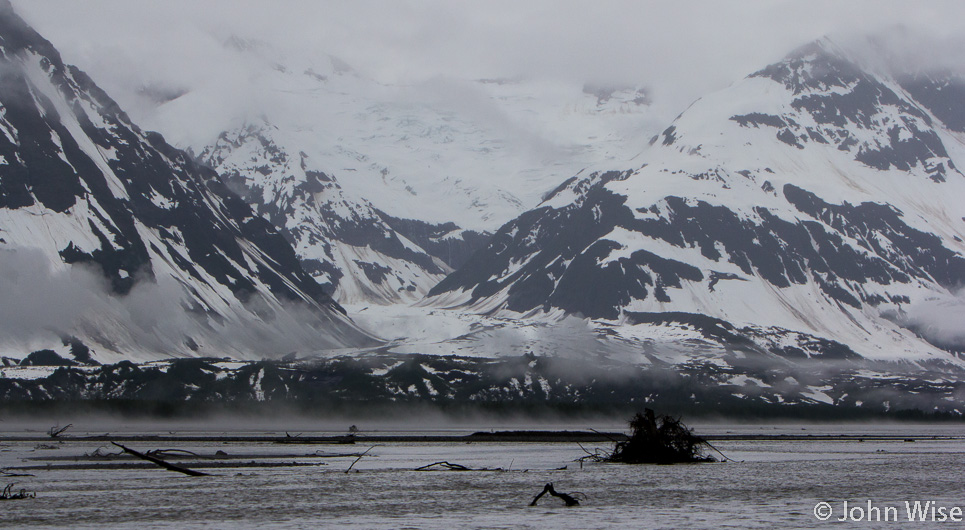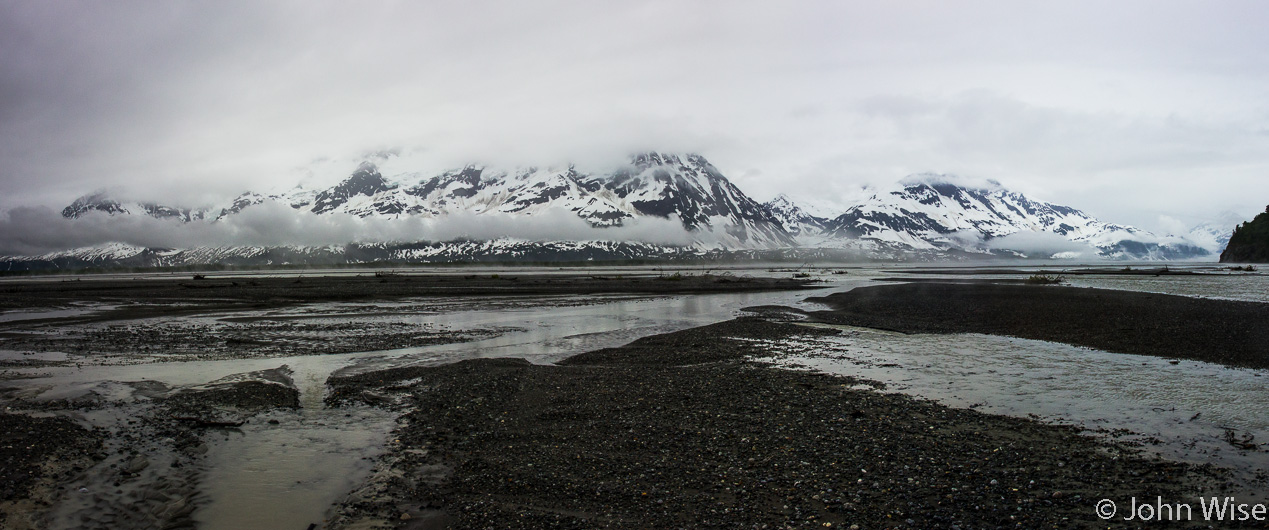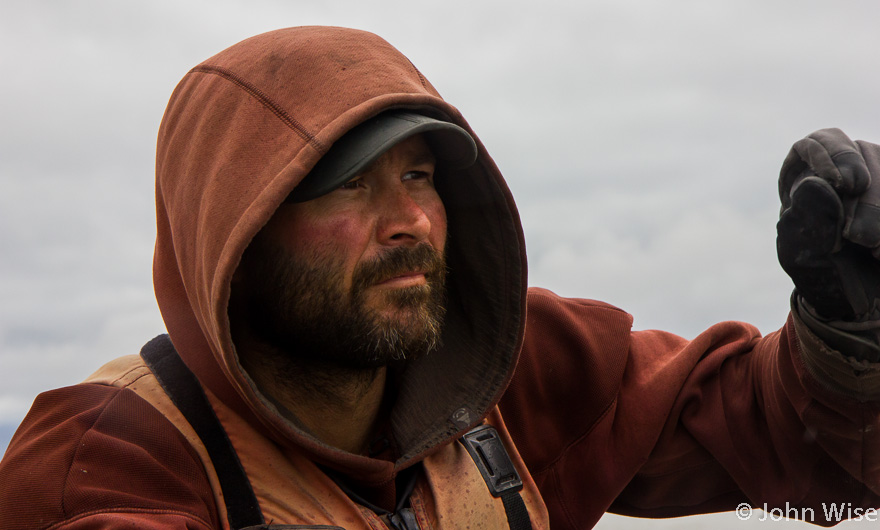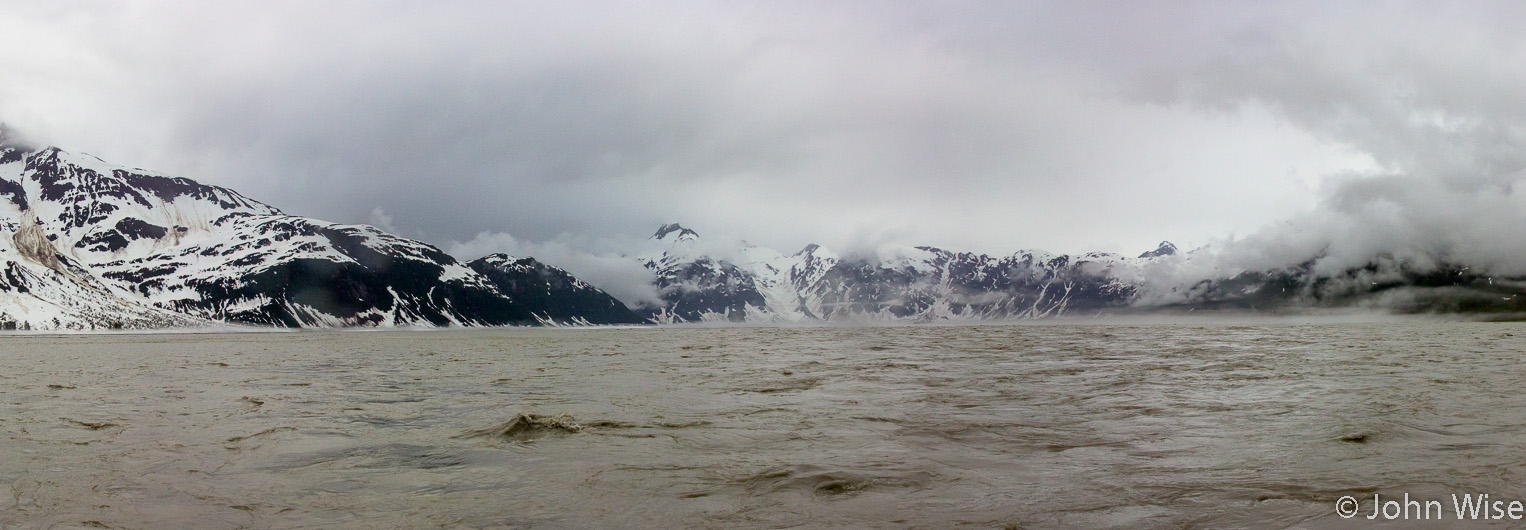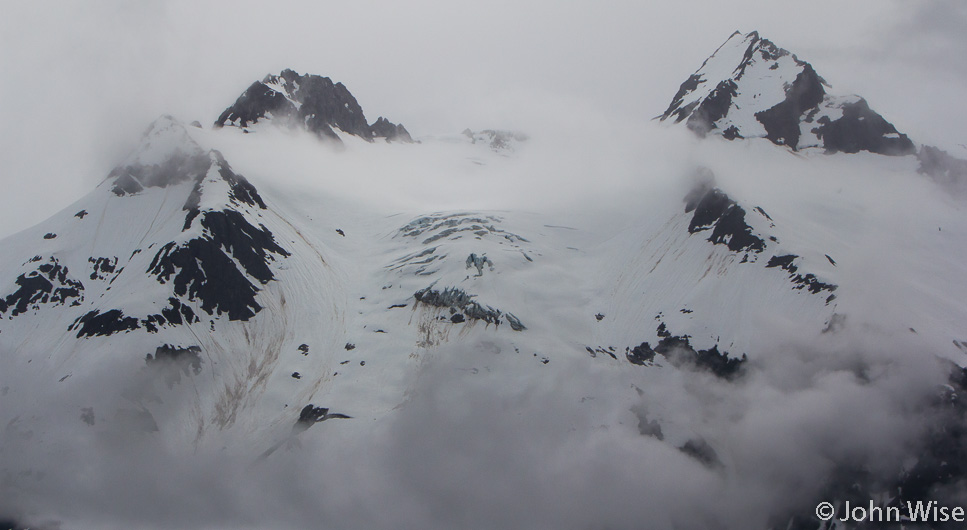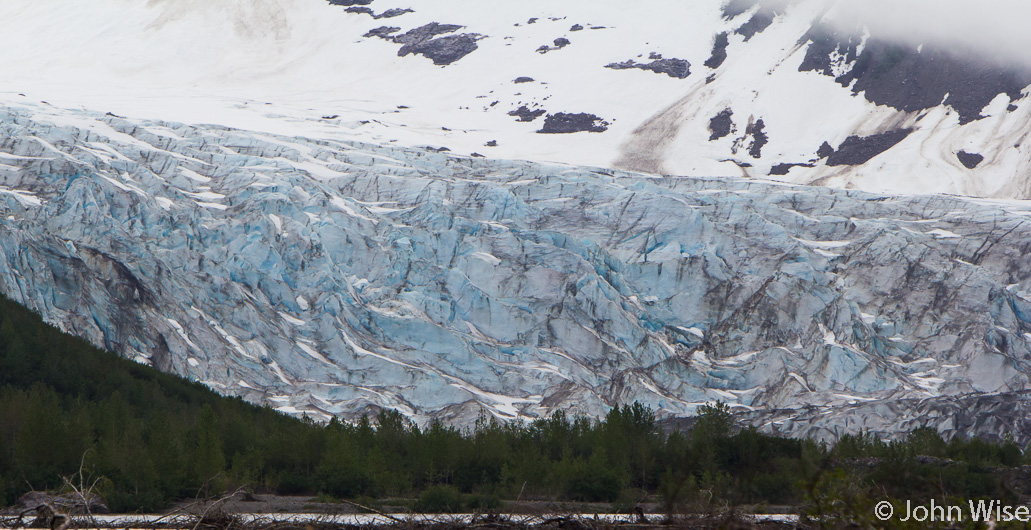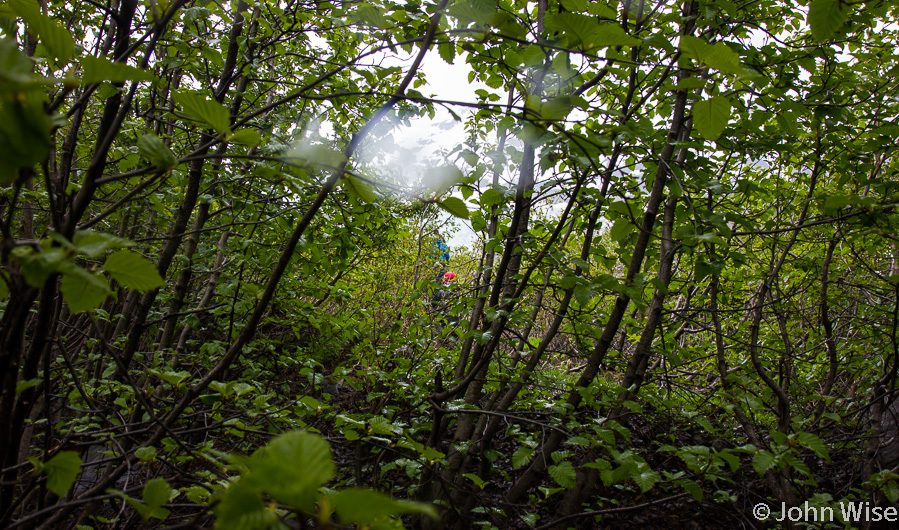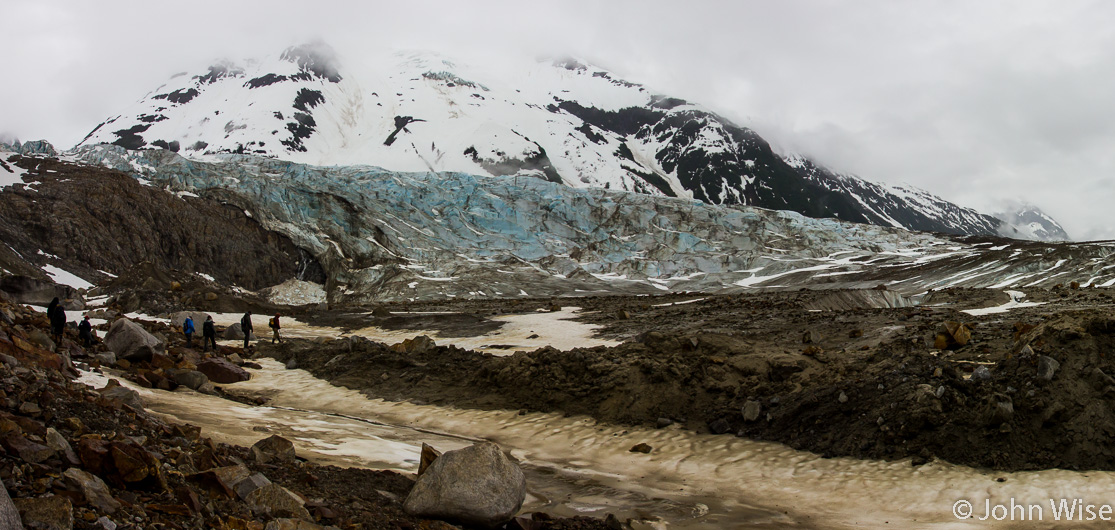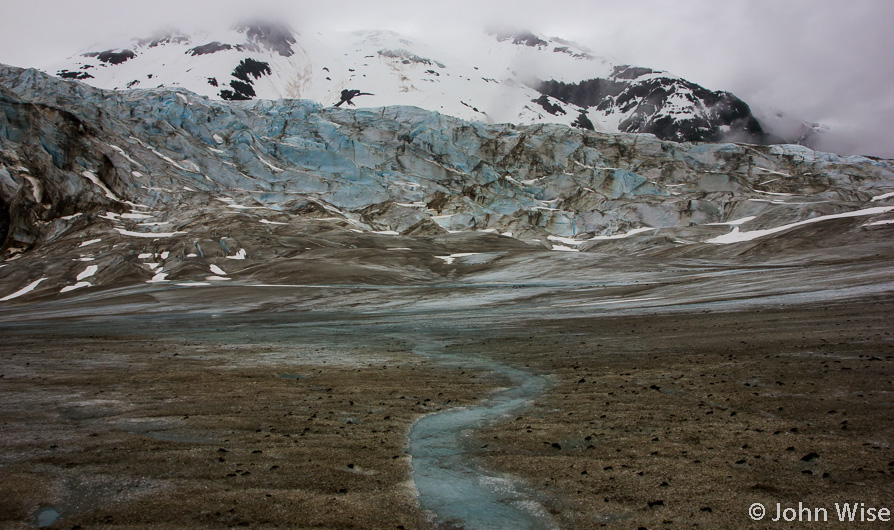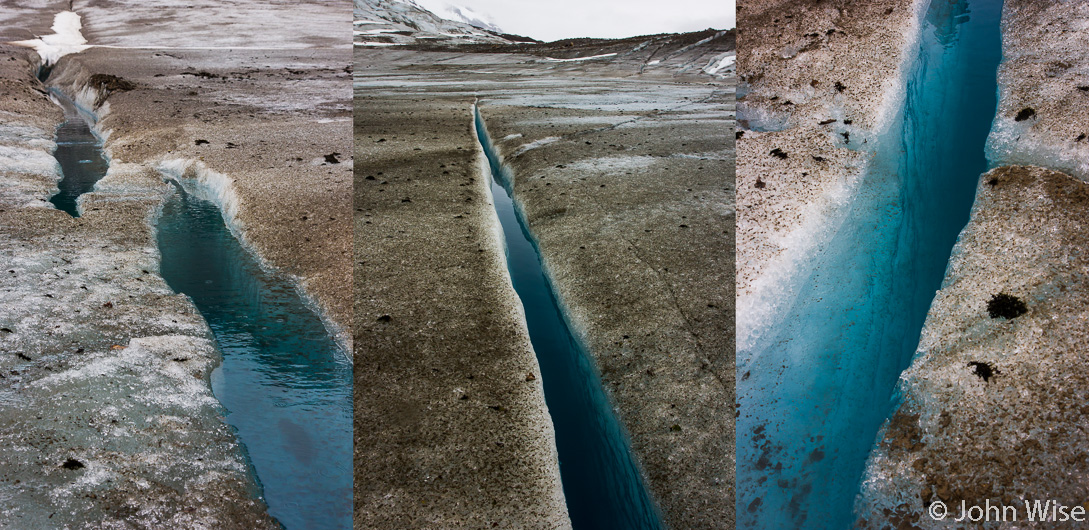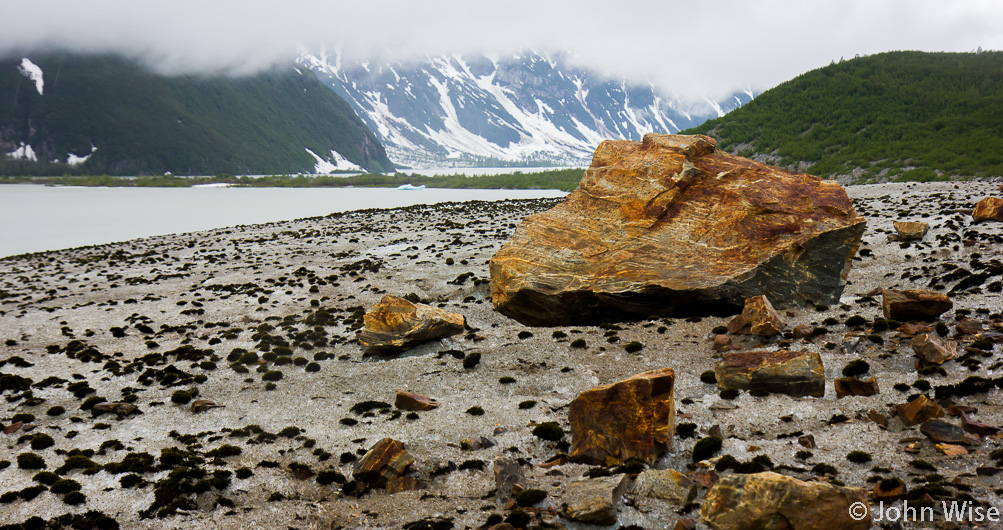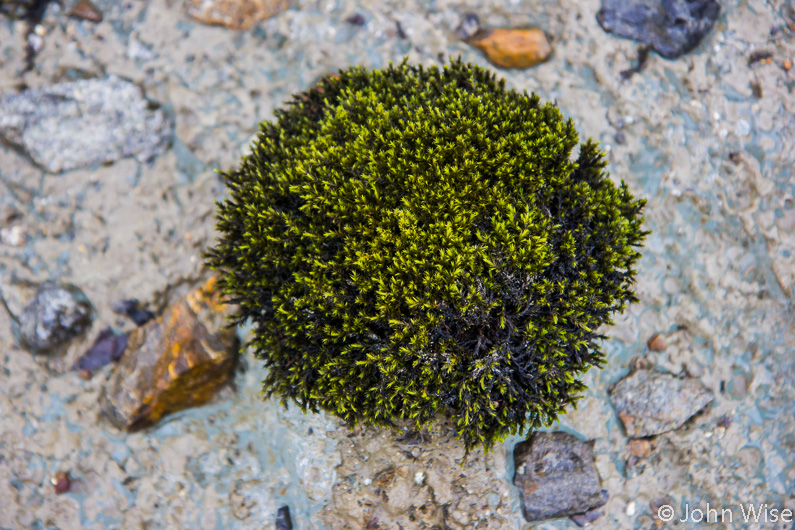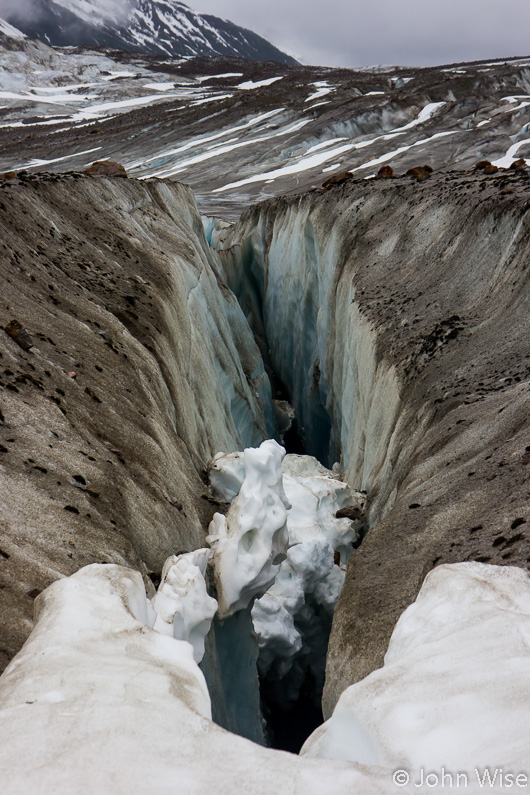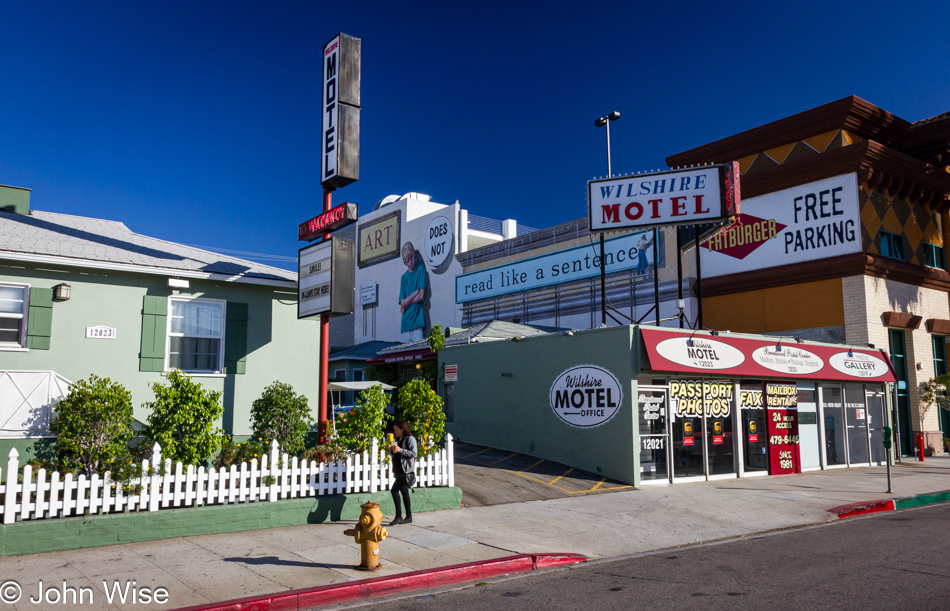
In the march forward through the long-neglected blog landscape, alas, yet another few days discovered gathering digital dust on the hard drive of a forgotten time. Here I am now in the future, the year 2023, when, with forensic tools, I uncover these images with great clarity, but the exact details of what we are doing these days, aside from the obvious, will remain buried in brains, not prone to giving up secrets. To state the easily apparent, we stayed at the good ole Wilshire Motel which was often our go-to place for a weekend in L.A.
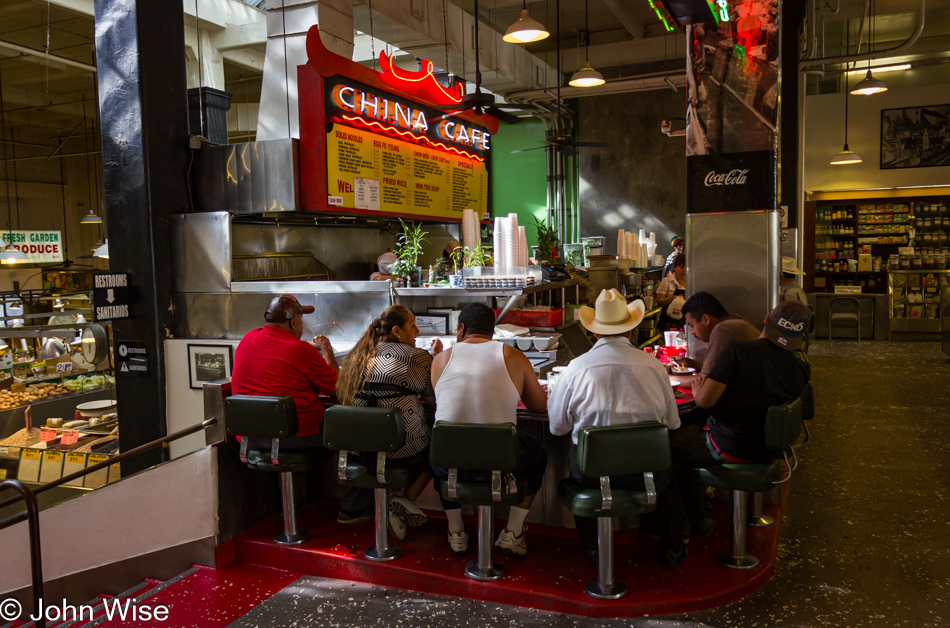
Taking ourselves to the Grand Central Market in Downtown L.A. was out of the ordinary but made sense, considering we are right next door to a meeting point that has everything to do with the primary reason for this visit to Southern California.
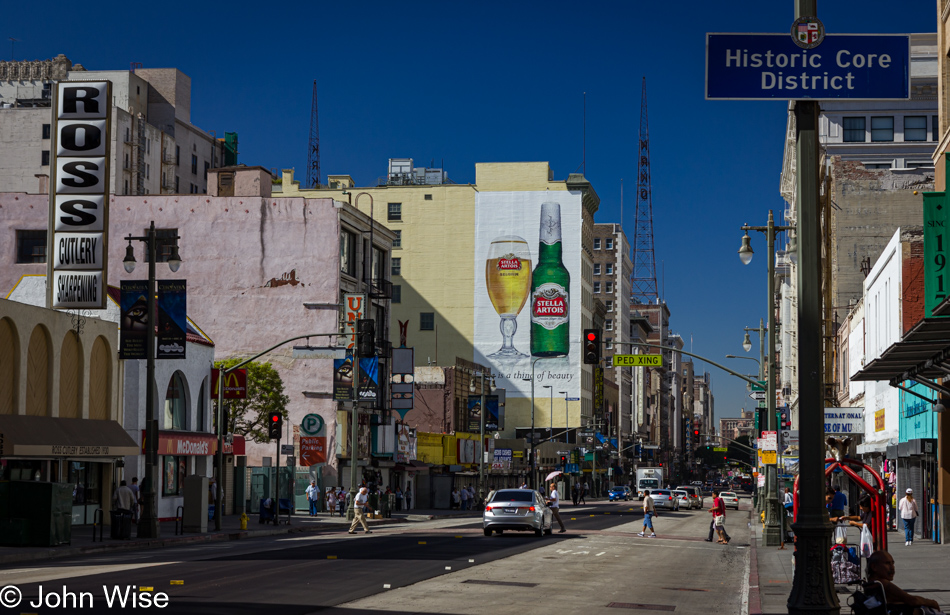
There’s something in common with more than a few of these old posts; it typically takes me some time to remember that I might have the itinerary and that it could have details that would help add to the story. Sure enough, I discovered something we’ll do here at the end of the day that I had no photos for and would have consequently missed; I’ll share it after the last photo.
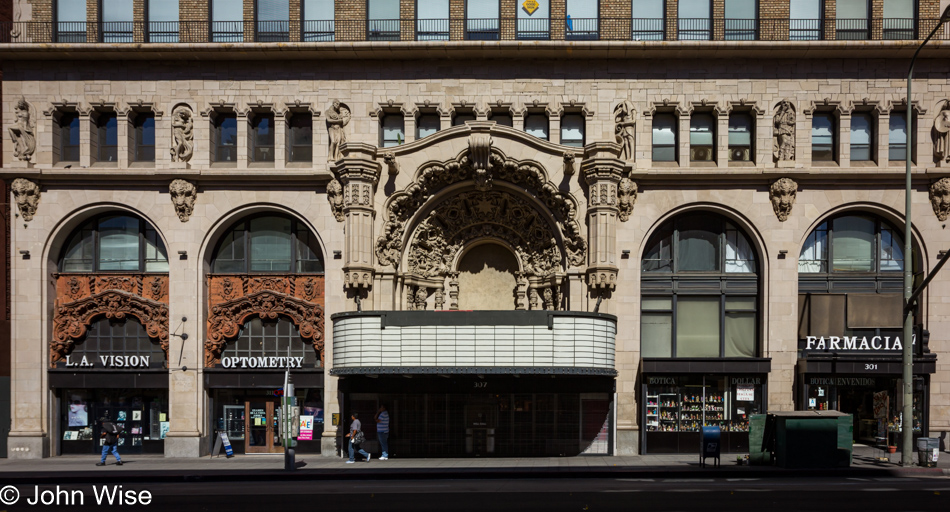
This is the Million Dollar Theater on Broadway, where we are meeting our tour guide from the L.A. Conservancy for the Broadway Historic Theatre and Commercial District Walking Tour. After learning about some of the history of Sid Grauman’s Million Dollar Theater and the current state of the theater that we couldn’t visit, we moved on to the next location.
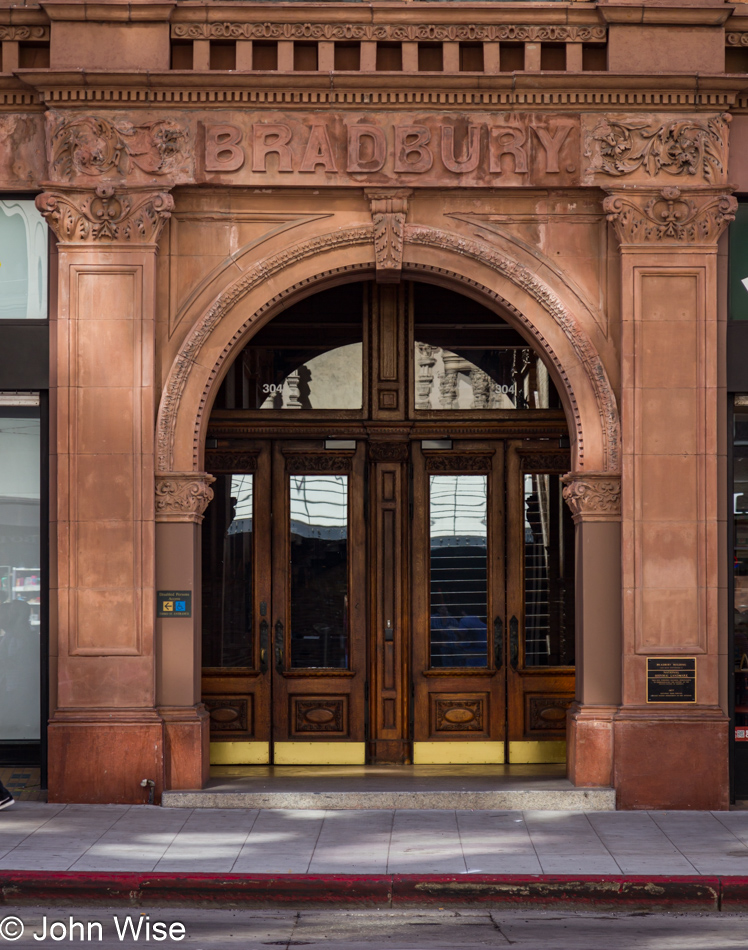
The famous Bradbury Building that I’ve likely written about on more than one occasion.
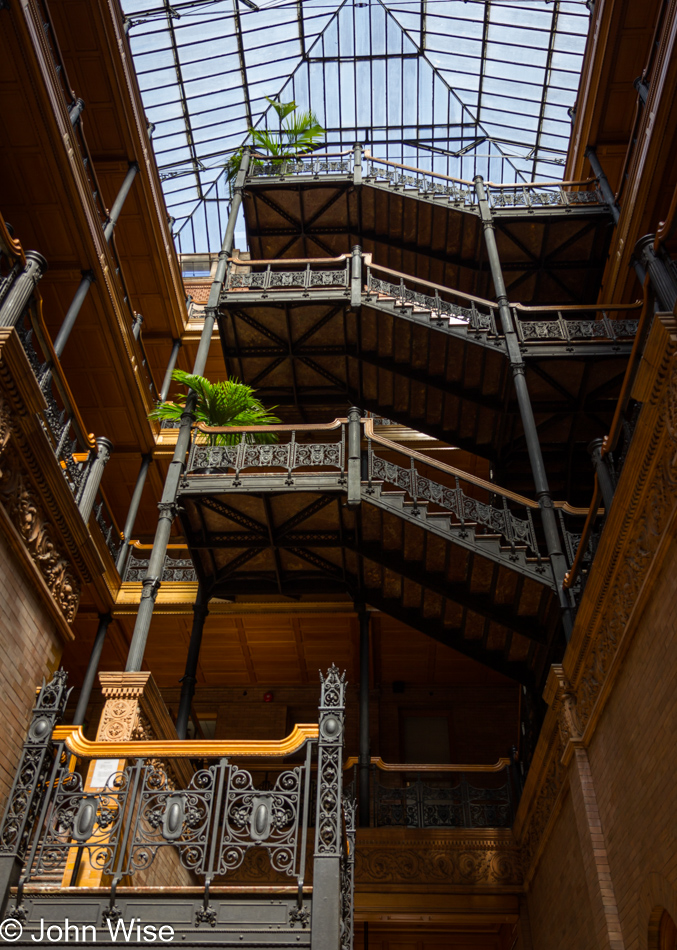
Does Blade Runner come to mind?
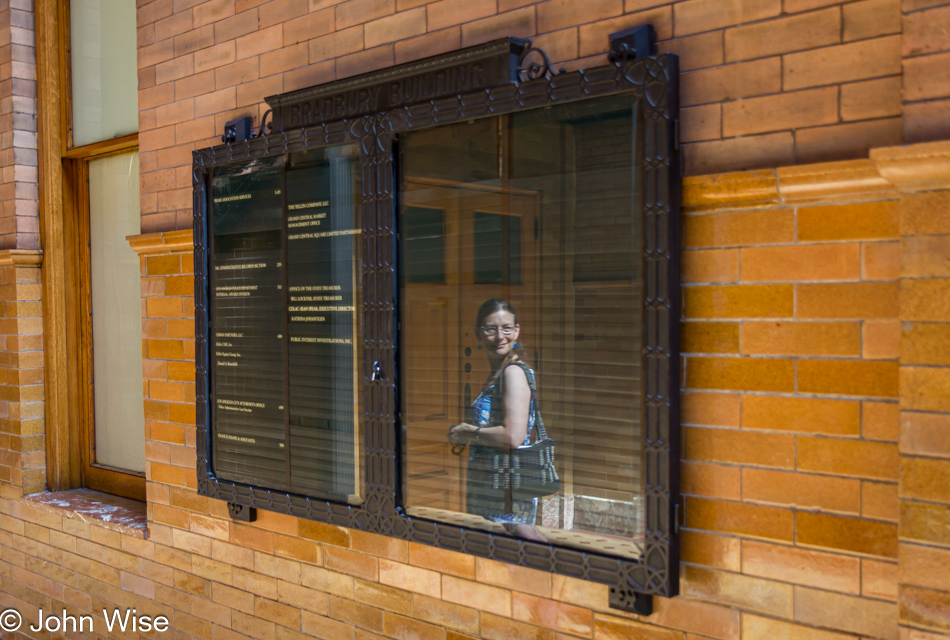
Hello Caroline…
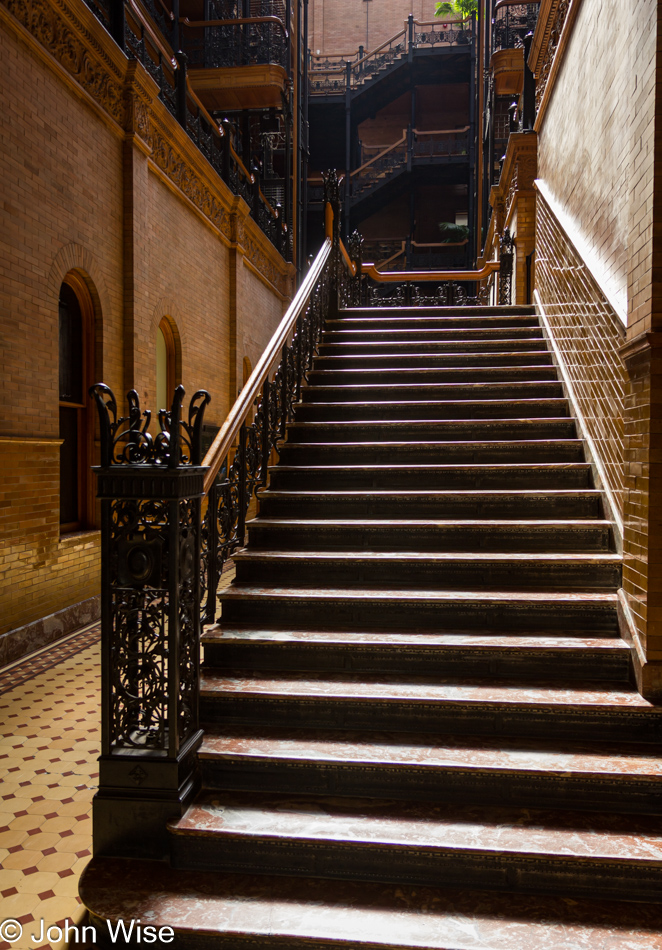
As I considered what to write here and started using image search to identify a few facades I couldn’t figure out, I thought about going into some history, but this might not be the best use of my time. Though I’d learn a lot, and Caroline too would capture some history we didn’t retain from our original tour, this post will likely remain unseen by anyone as it’s inserted into its holding place carrying a date nearly a dozen years old. Who, after all, looks at such dated posts?
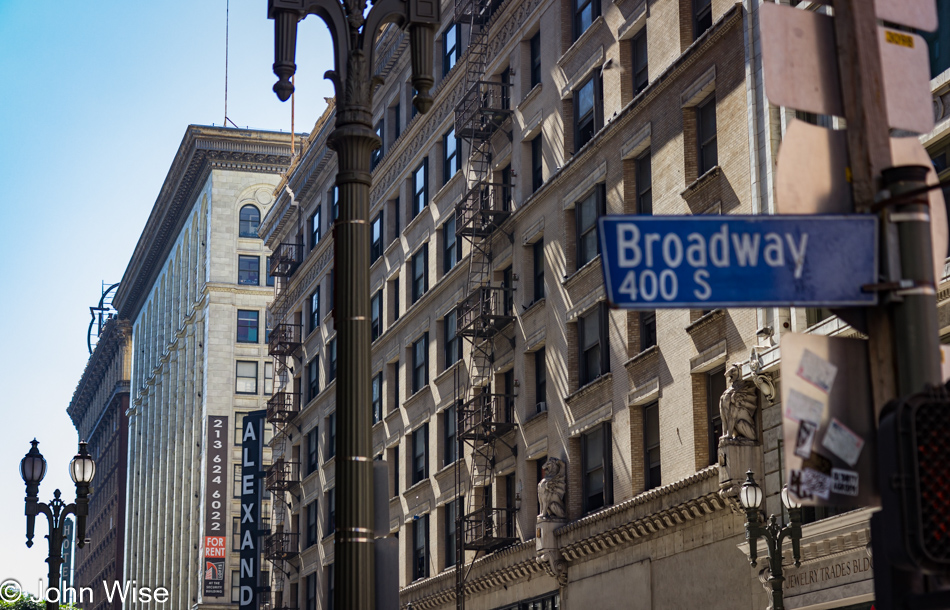
What I can offer is that we’ve enjoyed the various tours we’ve taken from the L.A. Conservancy and can only hope they remain well-funded and able to continue offering their events and tours for years to come.

Permanence is not part of the American vocabulary if financial utility can move to a newer, shinier location. Once the exodus begins to cheaper digs, decay sets in, and the value of what was once grand is allowed to fall into nothing.
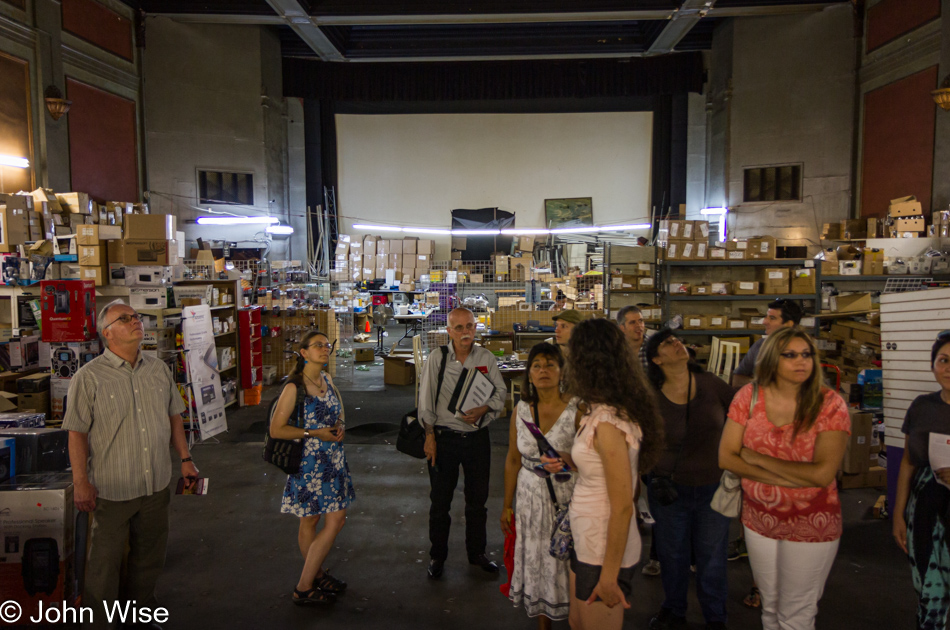
Lucky us, the current tenant of the space formerly known as Roxie Theater allowed us inside to see for ourselves that it now serves as a warehouse but still has the décor and movie screen present.

Prior to the move to Hollywood, many of the studios were located right here in the Downtown Los Angeles core. Fading for decades is the old logo of Paramount Pictures on the side of this building.
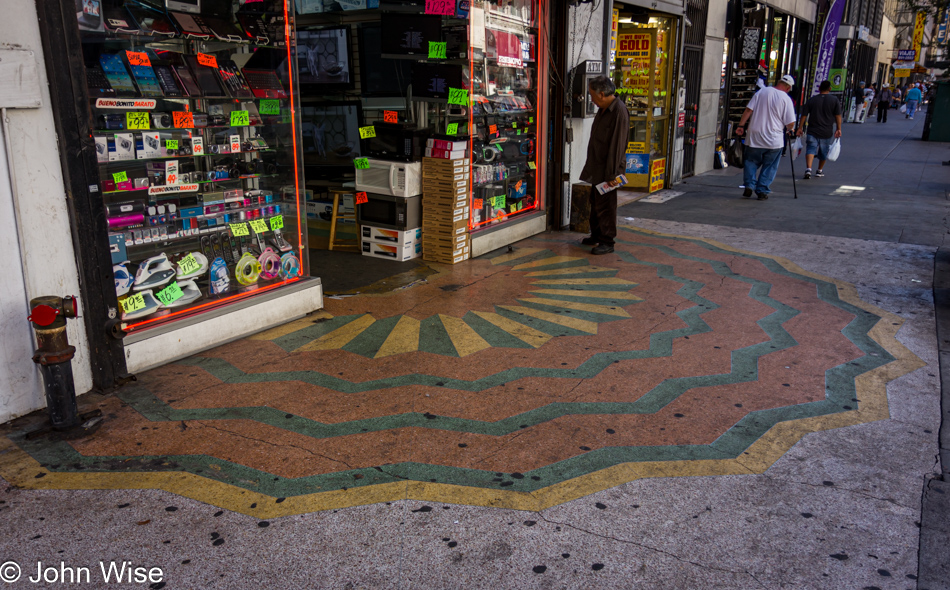
This terrazzo sidewalk used to be part of the Pantages Theater.
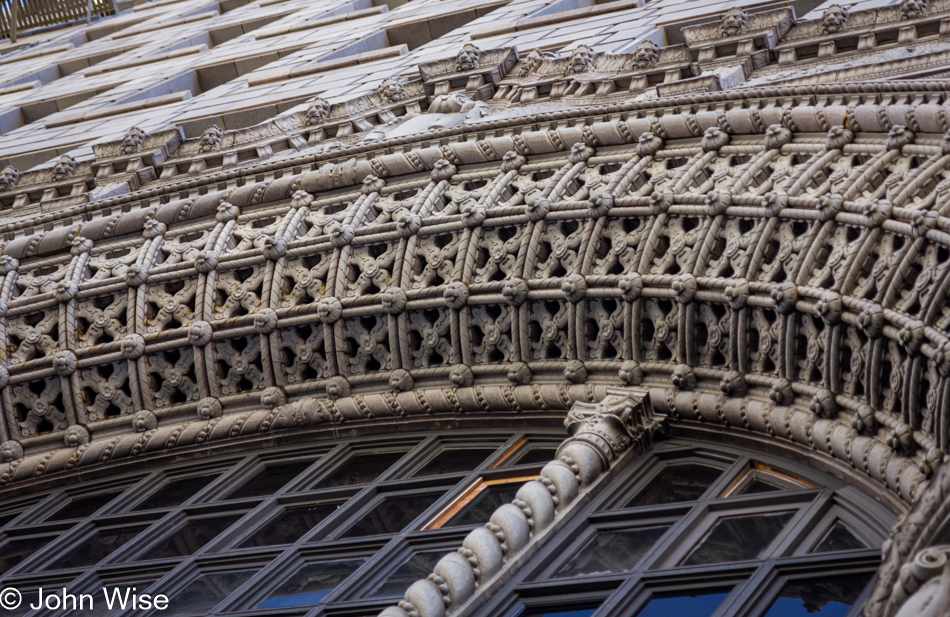
Detail of the Beaux Arts and Spanish Baroque style Broadway-Spring Arcade Building.
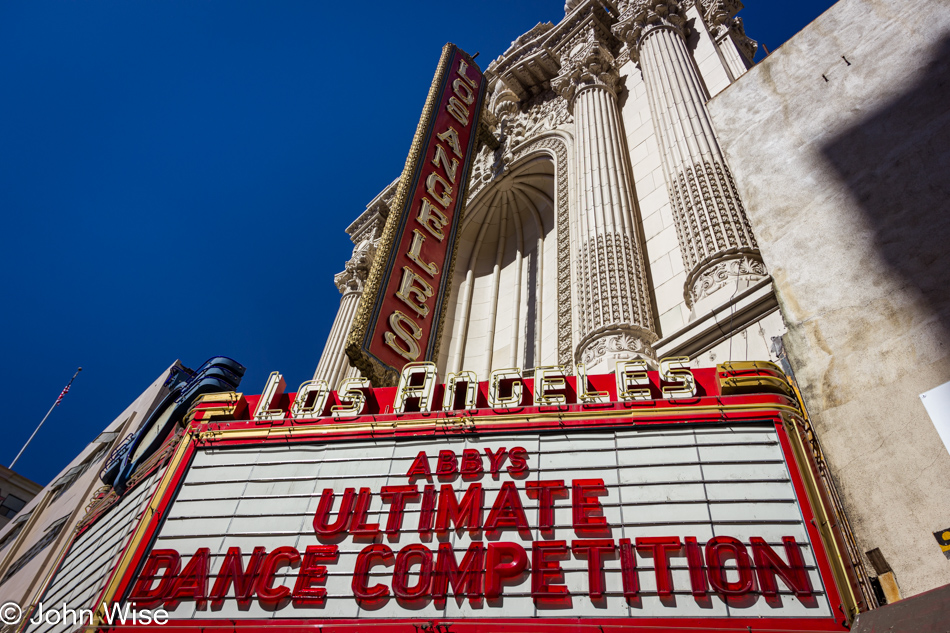
The Los Angeles Theater, built in 1931, was considered to be the most lavish of Broadway’s great movie palaces. Reading about all these old theaters, I got curious about the oldest operating theater in the U.S., it turns out to be in Washington, Iowa. The State Theater has been open since 1897 and is still showing movies as of 2023.
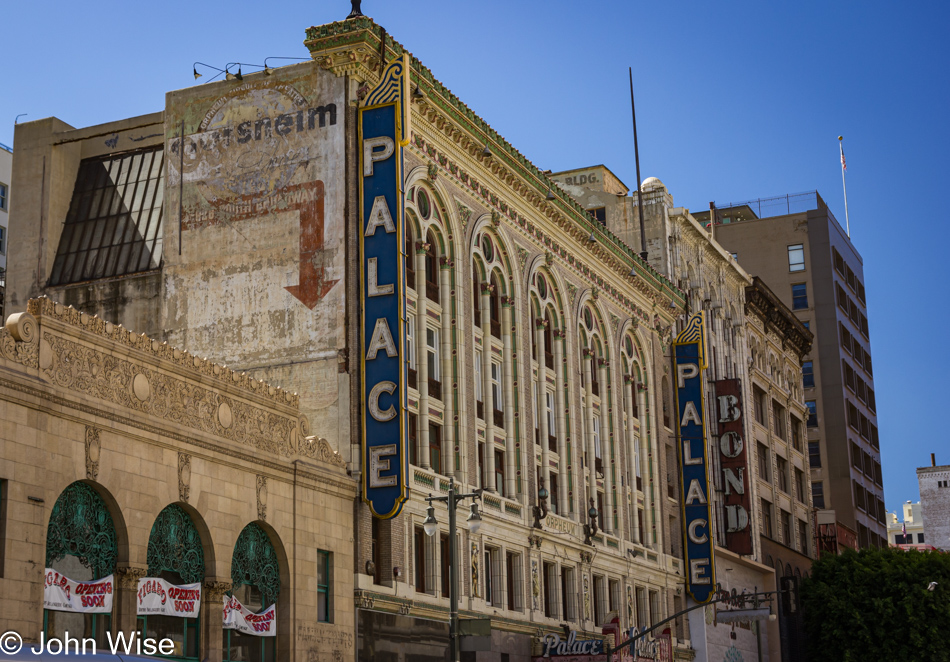
Growing up in the Los Angeles area and a frequent visitor of the downtown area, I wasn’t able to really consider the history of what I was seeing as I was simply overwhelmed by the sense of scale and decay of the city I was walking through. Learning that the Palace Theater was originally the Orpheum and was built in 1911 for vaudeville acts, not the movies, comes as a surprise, as is the fact that the building was loosely based upon a Renaissance-age Florentine palazzo. On its stage, the likes of Harry Houdini, Will Rogers, Fred Astaire, and Rita Hayworth have performed.
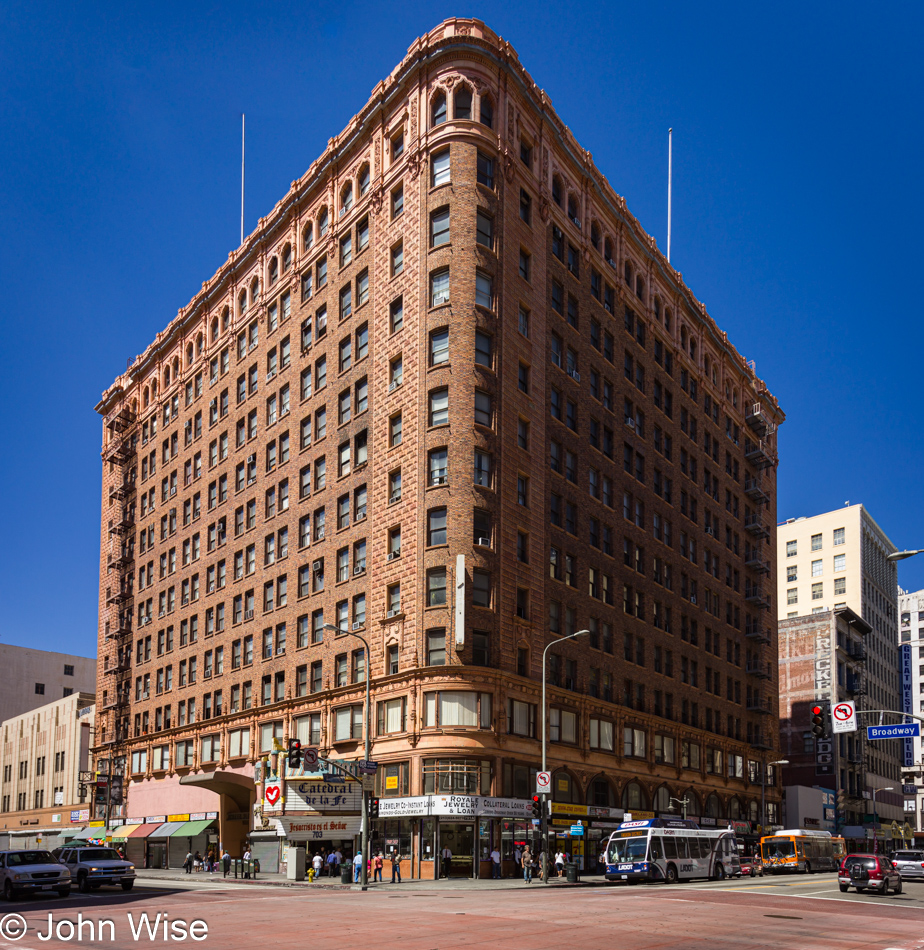
Pardon the wonky bending in my photo of the State Theater building, but it was created from three different images stacked one upon the other in a panorama, as I couldn’t capture it correctly with the lens I was using.
From a terrific website by Mike Hume / Historic Theatre Photos with the copyright held by him, he wrote of the State Theater:
In 1929, a Bakersfield act called The Gumm Sisters played at the State, featuring a lead singer who earned the nickname “Leather Lungs” for her ability to be heard clearly at the rear of the 125-deep auditorium. As the Great Depression took hold and vaudeville declined (vaudeville ceased at the State in the mid-1930s), the Gumm Sisters moved to Culver City to appear in experimental Technicolor musicals, and “Leather Lungs” changed her name to Judy Garland.
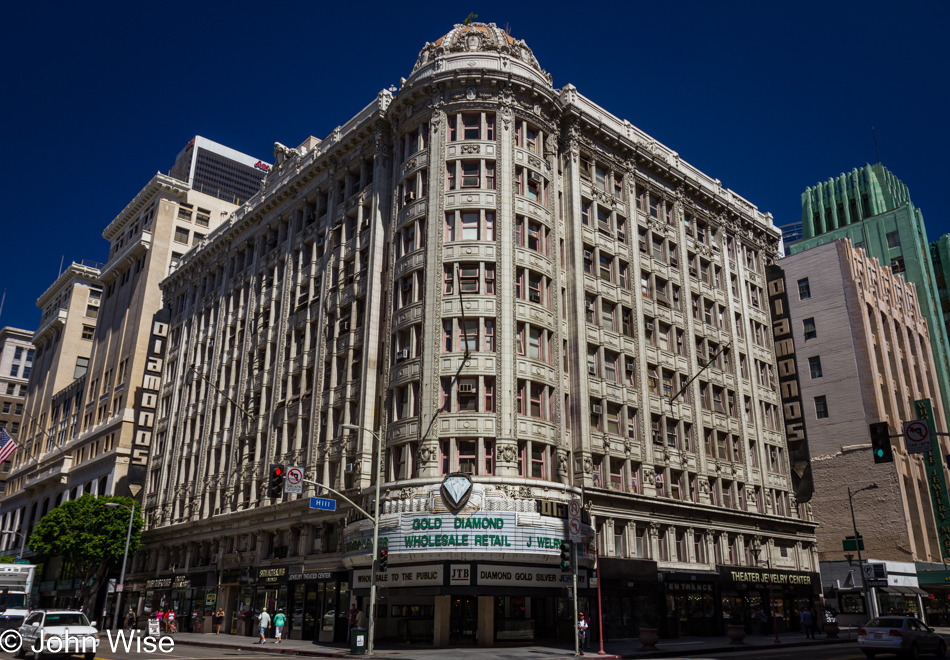
Behind the diamond is an old Warner Bros. logo, and while this was originally a Pantages Theater in 1920, by 1929, it became the home of Warner Bros.
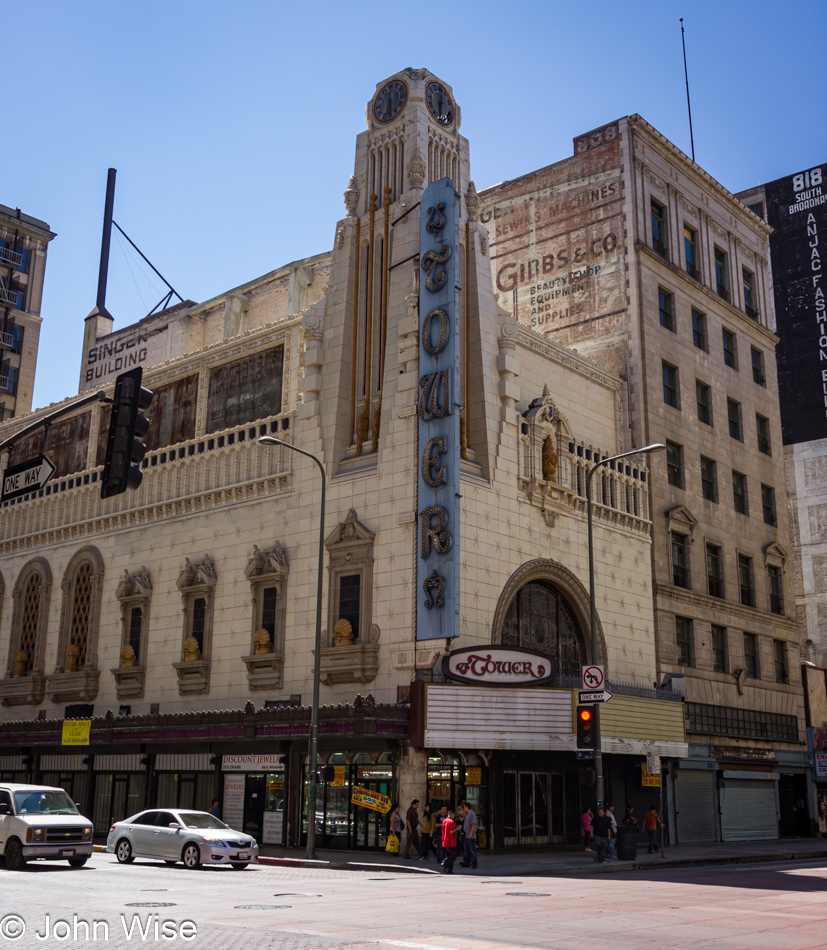
Tower Theater was once one of the narrowest theaters built; today, the ground floor is an Apple Store.
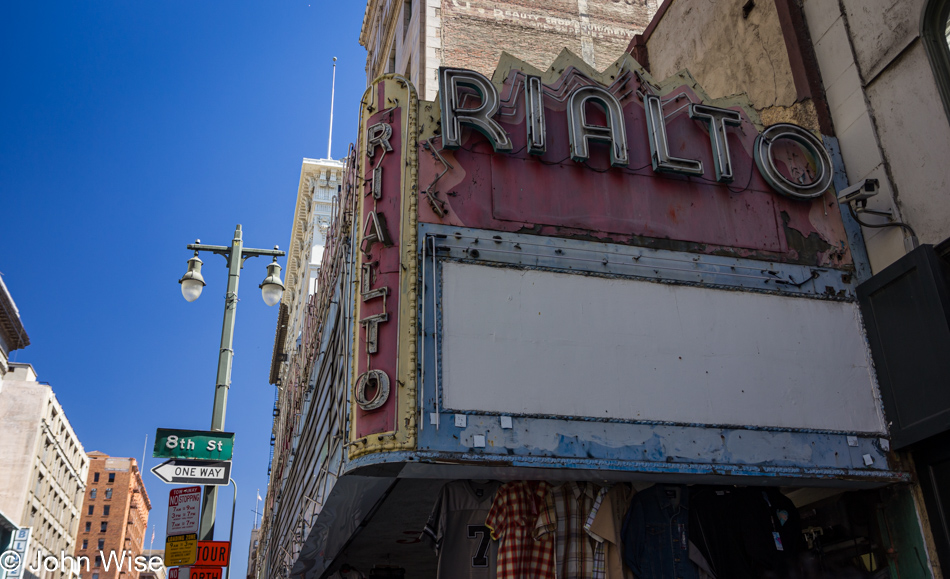
To the casual visitor, I wonder how many of them miss these old marquees?
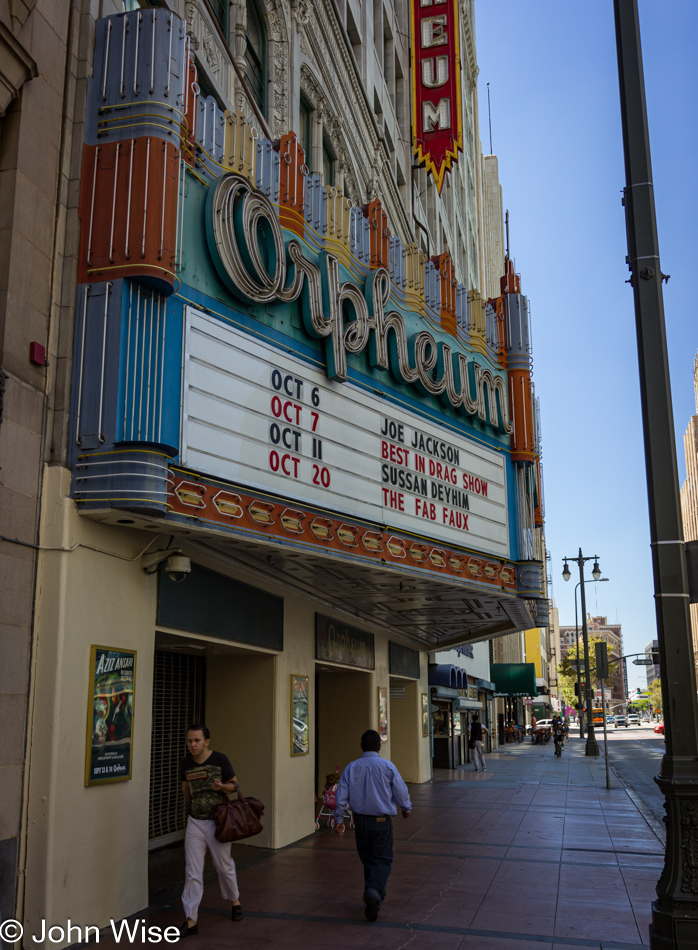
A bit more background on the Orpheum. These theaters were part of something called the Orpheum Circuit, a chain of vaudeville and movie theaters. As vaudeville was winding down, Orpheum merged into another company, becoming Radio-Keith-Orpheum (RKO) Pictures. RKO gave us such films as King Kong, Citizen Kane, It’s a Wonderful Life, and Notorious. Howard Hughes took over operations in 1948 before selling shortly ahead of its collapse.

Prior to this day, Caroline nor I had ever eaten Salvadoran food so the idea of having a lunch of pupusas at a Pupuseria sounded great to us. As of this writing in 2023, Sarita’s here at the Grand Central Market is still open.
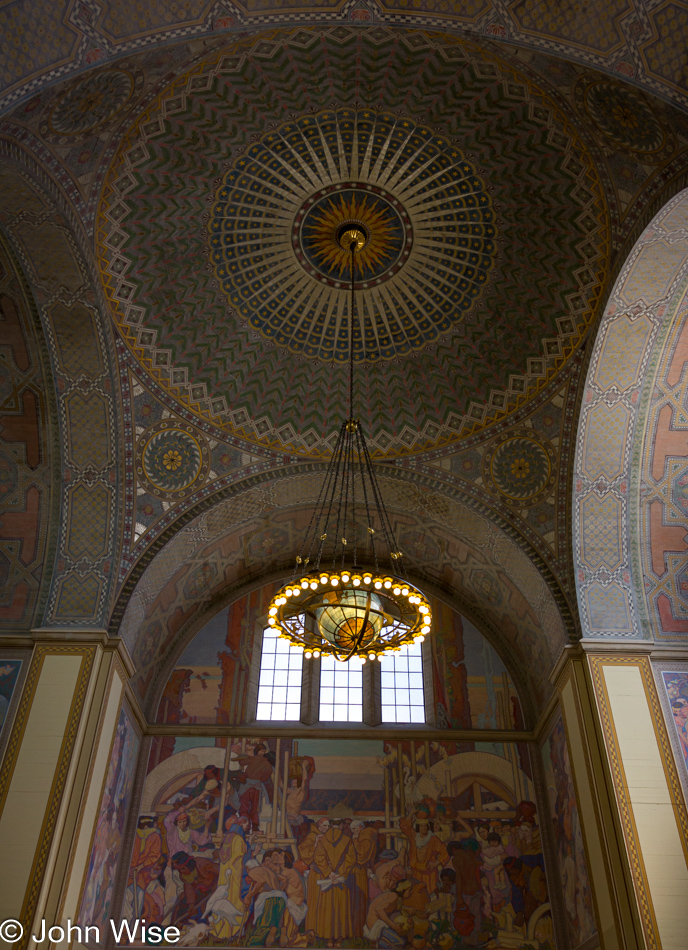
Seeing we’re already parked here downtown, why not spend a little more time and visit the Central Library? During the late 1970s, the Los Angeles Central Library was one of my favorite places to hang out and browse its amazing collection of old books. Little did I know back then that the city had ideas of demolishing this building, and it was that idea that gave rise to the L.A. Conservancy in 1978.
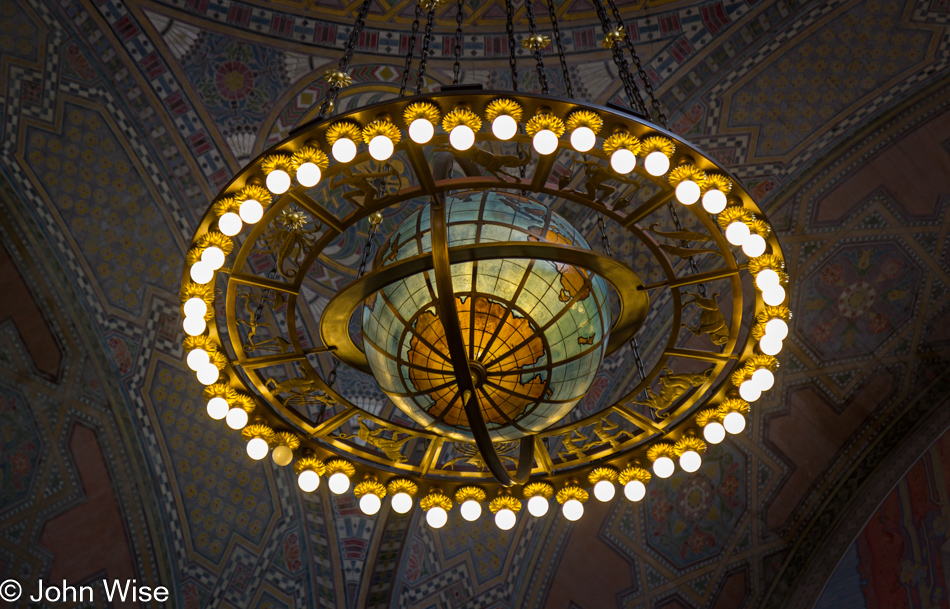
This Globe Chandelier featuring the 48 states that existed when it was built in 1926 for the rotunda of the central library survived the fire that devastated the library in 1986 and is just beautiful.
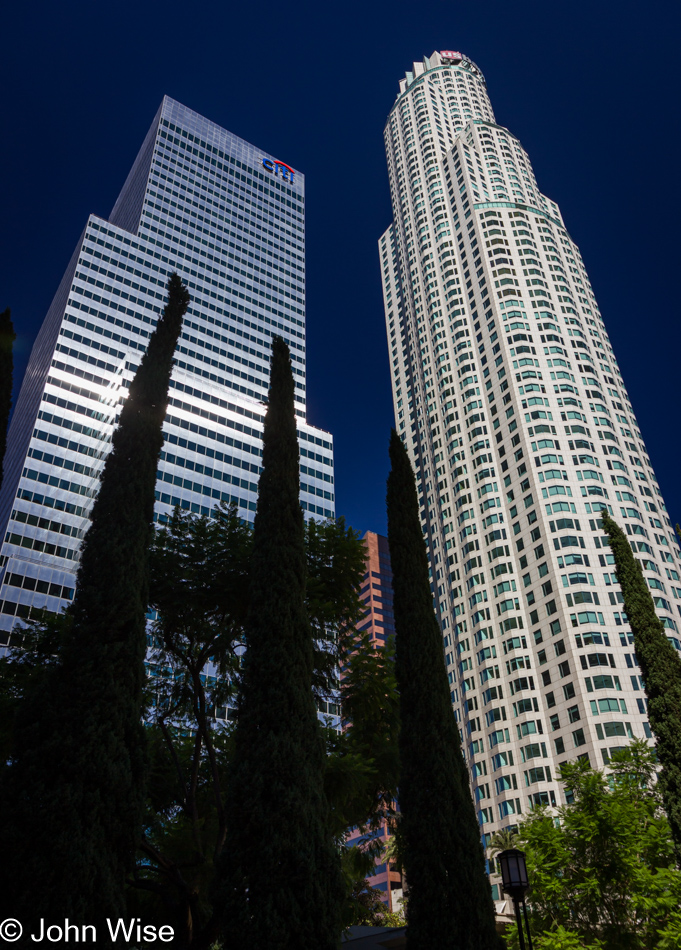
While the high rises of Los Angeles are imposing from below and make for a great skyline from a distance, they are ultimately impersonal and disposable, in my opinion.

While the old architecture is reflected in the new, the new hardly carries much of its own character that would make it interesting to look at.

This 12-story building, built in 1912, is 100 years old here in 2012 and has found new life as luxury lofts for those fortunate enough to be able to live in such splendor in the heart of L.A. This here should have been the end of the post, as I have no more photos of what we were doing on this day, but as I referenced above regarding itineraries, I had a note in that directory.
It turns out that we saw one of the earliest screenings of the documentary film Samsara, not only that, we had the opportunity to meet and talk for a moment with the director Ron Fricke, who made Baraka too, one of our all-time favorites.
